The Sirius Circumnavigation: Nossiter Trio Make Australian Sailing History

Also available
- Tim Nossiter - Profile
- Harold Nossiter Snr. - His Classic Yachts
- Richard Harwin Nossiter DSM OAM - ANZAC Day 2019 Tribute
Harold Nossiter Senior was born at Hunters Hill on July 12th 1875, the second son of Thomas Simester and Annie (nee Hossell). On July 14th, 1935, two days after turning 70, he and his two sons Harold and Richard (Dick) left Sydney to circumnavigate the world. The trip took almost two years and covered 28,000 nautical miles.
Harold Nossiter was a well-known Sydney importer and head of the wine and spirits department for Dalgety and Co., Ltd., and Vice President of the Wine and Spirits Association of N.S.W. prior to retirement. He was also a brilliant and passionate sailor in both racing and cruising, and a member of the Royal Sydney Yacht Squadron, the Royal Prince Alfred Yacht Club, Sydney Amateur Sailing Club and the Prince Edward Yacht Club.
In 1932 he began planning his retirement to include a voyage by yacht around the world. Mr. Nossiter wanted a custom designed boat and took his concept, an advanced design for the period, to John Dickenson Thistlethwaite, a naval architect at Greenwich, Sydney. Mr. Thistlethwaite prepared a set of detailed drawings for a robust cruising yacht, rigged as a staysail schooner.
Originally she was reported to be being built under a different name - the 'Mermaid':
PLANS WORLD CRUISE
NEW YACHT, MERMAID
HAROLD NOSSITER IS BUILDING FINE VESSEL
By "BERMUDA"
PLANNING a world's cruise to last two years, Mr. Harold Nossiter, has a new yacht, the Mermaid, under construction at Messrs. J. Hayes and Son's yards at Neutral Bay. The course or cruise will be from Sydney northward through Torres Strait to Java, Singapore, and Ceylon, then through the Red and Mediterranean Seas, to England. The return voyage will be made via the Panama Canal. The Mermaid is to be an exceptionally fine type of auxiliary cruising yacht of 34 tons. Designed with a spoon bow and cruiser stern, her principal dimensions will be length 54ft., beam 13ft. 6in„ draught 7ft. 6in. An 18 h.p. Jersey City Standard Engine will provide auxiliary power.
Mr. Nossiter will be accompanied by two of his sons, R. H. Nossiter, who will this week sit for an examination for a foreign-going yacht master's certificate, and J. Nossiter. PLANS WORLD CRUISE (1933, October 19). The Daily Telegraph (Sydney, NSW : 1931 - 1954), p. 4. Retrieved from http://nla.gov.au/nla.news-article247162044
The keel was laid at the Careening Cove yard of the well established builders James Hayes and Sons. A canoe-sterned yacht, she was planked in Australian jarrah below the waterline and New Zealand kauri above. The supporting framework and structure was spotted gum, while the stem was a grown tea-tree crook. The mainmast was 19.8 metres (65 feet) and the foremast 17.6 metres (58 feet) long. She was of some 35 tonnes displacement, 16 metres on deck and 18.9 metres overall. A writer in the British magazine 'Yachting Monthly' (date unknown but possibly in 1936) described it as 'full chested and sturdy, she is a true Aussie'.
This was, in part, what Mr. Nossiter wished to achieve - to showcase Australian yacht design and yacht building skills to the rest of the world, one newspaper reporting on his return:
Mr. Nossiter said that wherever the Sirius went it was admired by yachtsmen, especially in England. Its design, rig, and construction, they said, did great credit to Australia. Others were amazed at the amount of sail carried on a craft managed by only three hands. The beauty of the Australian timbers used in the Interior was also praised. YACHT SIRIUS RETURNS. (1937, May 21). The Sydney Morning Herald (NSW : 1842 - 1954), p. 11. Retrieved from http://nla.gov.au/nla.news-article17369977
That 'Yachting Monthly' mention in full:
Round the World in the Sirius
II. — Suez to the Solent
'WISHBONE,' the author of an article appearing in the 'Yachting Monthly' (England), writes of the Sirius and her amazing voyage as follows:— 'Built for ocean cruising, this able-looking, canoe-sterned, 53ft staysail schooner has been sailed from Sydney, N.S.W., to England by her owner, Mr. Harold Nossiter and his two sons. . . . Sirius was designed for the purpose by John D. Thistlethwaite, naval architect, of Greenwich, N.S.W., and built at the yard of James Hayes and Sons, in Neutral Bay. . . . Full chested and sturdy, she is a true 'Aussie.'
The lines show a hull which is full-bodied, with a generous displacement, but with a sharp rise to the garboards. The ends are full and buoyant and there is sufficient 'lift' in them to keep the decks dry. . . . Perhaps one's first impression on stepping aboard is that the decks . . . are strikingly free from useless deck fittings and encumbrances and clear for working the gear. Below, the size of the engine-room and its light and airiness are most noticeable, but it is the size of the saloon . . . that takes one's already short breath away. There are no cramped quarters, no dark corners here to hold damp air and encourage mildew. . . .
The galley is perfectly situated. . . . Unlike so many of these ocean cruisers, Sirius does not look like a cross between a tramp and a decayed fishing boat. She looked trim and Bristol fashion when I saw her. . . . She has white enamelled topsides, clean laid decks, and an air of neatness that dispels the convention that a deep-sea cruiser should look a mass of tattered baggy wrinkles and frayed rope ends. Sirius, in fact, looked like — a yacht!' Round the World in the Sirius (1937, August 18). Sydney Mail (NSW : 1912 - 1938), p. 36. Retrieved from http://nla.gov.au/nla.news-article160496036
'Australian Motor Boat and Yachting Monthly' magazine also carried a number of reports of her construction in its 'Round Slip and Yard' column:
10 August 1934: 'A large schooner now being built by this firm for Mr. Nossiter has created quite a deal of interest among yachtsmen throughout the Commonwealth ... The service for which the yacht is intended, viz.,"Around the World Cruise," has made it imperative that the timber selected and the workmanship throughout be first class'.

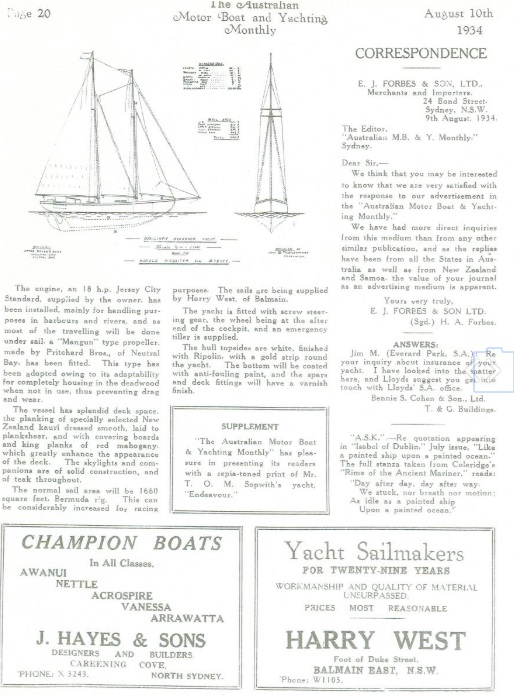
10 September 1934: 'Progress with the auxiliary yacht Sirius has been well marked during the last month. The vessel now stands fully planked, the beams are in place, and work on the deck is about to be commenced. A glance over this vessel shows that the strength has been more than adequately provided for. Not only are the timbers in excess of all its requirements, but the heavy grown floors, lodging and hanging knees will prevent any deformation under the most rigorous conditions'.
Harry West, well-known Balmain sailmaker, was commissioned to make the sails, canvas work, cushions, upholstery and bedding.
She took a little over a year to build and was launched in the presence of 300 guests on February 6, 1935, christened by Winifred as 'Sirius', after the brightest of all stars.
TO SAIL ROUND THE WORLD
Mr. Nossiter's, Sirius Nearing Completion
(By 'FOR'ARD HAND')
AT the end of the month Mr. Harold Nossiter's yacht, Sirius, will be launched from the yards of Jas. Hayes and Sons, of Careening Cove, Sydney. The craft has been built with the object of circling the world, and the owner considers that the trip will occupy two years, starting from July next.
The Sirius is one of the biggest yachts turned out in Sydney for years. She has a length overall of 53ft 6in, with a 13ft 7in beam, and a draught of 7ft 6in. Comfort has been studied, as there is 6ft head room in the cabins, which have been finished in Queensland maple, while the floors are of Western Australian Jarrah. The owner has had a special cabin built for his own comfort, while accommodation has been planned for six, and In addition there Is a large saloon, 12ft by 13ft. Sail lockers have been built, and three hatches have been constructed, with the object of avoiding the use of fanlights, and to prevent water from finding Its way down below in the event of rough seas.
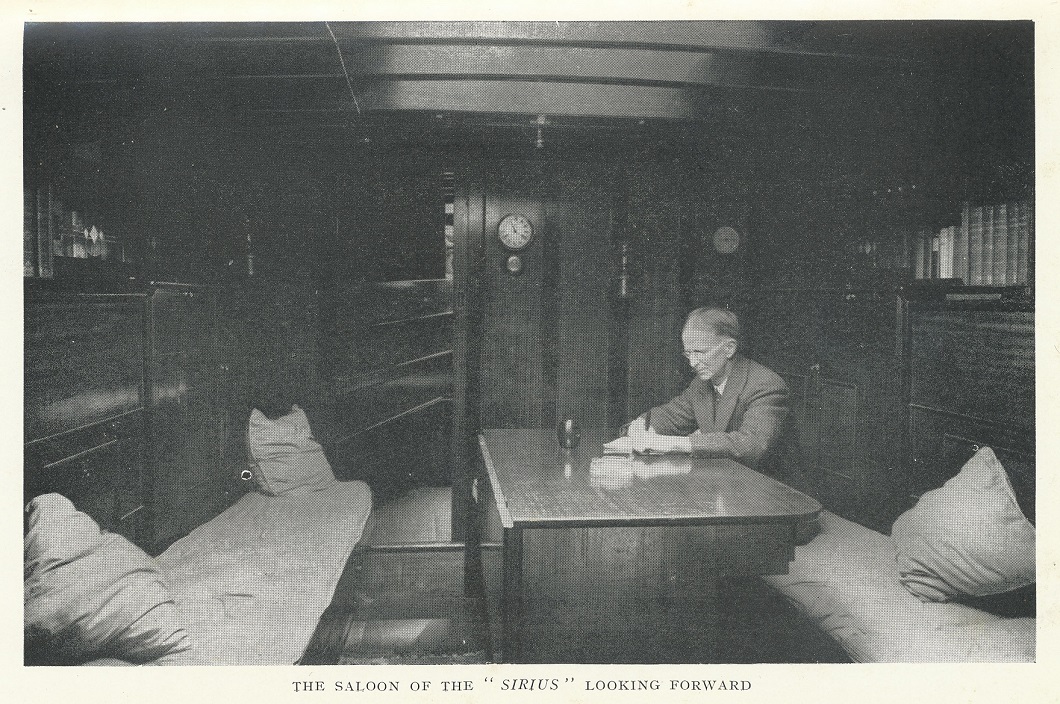
Harold Nossiter, owner and Skipper in the Main Saloon
The Sirius has been built above Lloyd's specifications. Tea tree has been used in the construction of knees, the planking is of jarrah, and the beams of spotted gum, with kauri decks. The whole of the voyage will be undertaken by sail, but an 18 h. p. Jersey City marine engine will be fitted for emergency- use. Tanks have been 'fitted' to carry 350 gallons of water, and there is plenty of storage for food.
The yacht will have a crew of four, and the navigator will be Richard Nossiter, 24 years' of age, who has passed for his master's certificate with honors. The initial stage of the trip from Sydney will be to New Caledonia, New Hebrides, Straits Settlements, Ceylon, and thence by the Red Sea to England, returning via America. Four amateurs will constitute the crew.
TO SAIL ROUND THE WORLD (1935, January 3). Referee (Sydney, NSW : 1886 - 1939), p. 19. Retrieved from http://nla.gov.au/nla.news-article135515537
The launching of Harold Nossiter's the Sirius on February 6th, 1935
WORLD CRUISE
YACHT SIRIUS LARGEST SINCE 1903
The staysail schooner Sirius, launched yesterday for Mr. Harold Nossiter, a prominent N.S.W. yachtsman, is the largest sailing yacht built in Sydney since 1903, when Boomerang, ex-Bona, was launched. The Sirius has been specially designed and constructed for a world voyage to extend over two years, upon which her owner. Mr. Harold Nossiter. will embark from Sydney at the end of July. Accompanying Mr. Nossiter will be a crew of three, including two of his sons, one of whom. R. H. Nossiter, will be the navigator of the yacht. An auxiliary engine of 18 h.p. has been fitted mainly for the purpose of entering and leaving harbors and rivers. Constructed with a spoon bow and cruiser stern, Sirius will be fitted with two spruce pine masts and rigged as a staysail schooner, carrying sails of an area of 1700 square feet. In appearance she i the finest type of auxiliary cruising yacht launched to date on Sydney Harbor. Her principal dimensions are: 53ft. 61n. overall length, 44ft. 7i. water line length. 13ft. 6in. beam. 7ft. 6n. draught, with 7 tons of lead attached to the keel. Gross tonnage is 30.26 tons, and nett 20.56 tons. Over 200 guests representing the yachting community and commercial life of Sydney, were present at the launching ceremony, which was carried out by Mrs. Harold Nossiter. WORLD CRUISE (1935, February 7). The Daily Telegraph (Sydney, NSW : 1931 - 1954), p. 2. Retrieved from http://nla.gov.au/nla.news-article246501960
The Sirius - Launch article - Nossiter family records
After the launch Dick lived aboard. The masts and rigging were erected once she was in the water and she was fitted with an 18 horse-power Jersey City Standard petrol engine. Harold Nossiter took delivery in the April. They made two short coastal cruises before the date fixed for their departure, July 14th, 1935.
Around World In 30-Ton Yacht
FAMILY'S 2-YEAR CRUISE
SYDNEY, Wednesday. — Four Australians will set out on Sunday to circumnavigate the world in the 30-ton yacht, Sirius, marking an epoch in such ventures in an Australian-built craft of this size. The party will comprise Mr Harold Nossiter, of Northwood Road, North-wood, the owner; his sons. Harold, 27, and Dick. 25, expert yachtsmen, the latter holding a yacht-master's certificate; and Mr Clive Russel, 28, of Melbourne. Farewells have been tendered Mr Nossiter by the Royal Yacht Squadron, to which he belongs, and the Prince Edward Yacht Club.
The yacht will carry a wireless set, enabling world-wide reception, but no transmission. The Sirius is 53ft. 6in. long, with a 13ft. 7in. beam, and draws 7ft. 6in. The auxiliary 18 horse-power petrol engine in the staysail schooner rigged yacht will not be used except in ports or in case of emergency.
All-Australian Venture
At 11 a.m. next Sunday, escorted by other private craft, the four adventurers ;will sail from Woodford Bay. Lane Cove River, carrying from 15cwt. to 1 ton of stores— all Australian, and expected to last for the two years allotted for the! voyage. Mr Nossiters patriotic zeal permeates every aspect of the projected adventure. All Australian material was used in the yacht by the builders, F. Hayes and Sons.
In the choice of the name Sirius, Mr Nossiter explained today, he was guided by several influences. Sirius was the flagship on which Governor Phillip entered Port Jackson at the head of the first fleet. "It is the brightest star in the heavens, and a southern star, and therefore Australian." added Mr Nossiter.
Sirius Cove has pleasant associations for him and it was in Sirius House, Macquarie Place, not far distant from the first Government House where lived Governor Phillip, that were held meetings of the Wine and Spirit Merchants' Association, of which Mr Nossiter was a vice-president until his retirement for this venture. Around World In 30-Ton Yacht (1935, July 10). The Herald (Melbourne, Vic. : 1861 - 1954), p. 10. Retrieved from http://nla.gov.au/nla.news-article244935985
On Sunday July 14th, Nossiter, his two sons Harold and Richard, along with Clive Russell, duly left Sydney Harbour. Richard, who kept the Ship's Log, recorded;
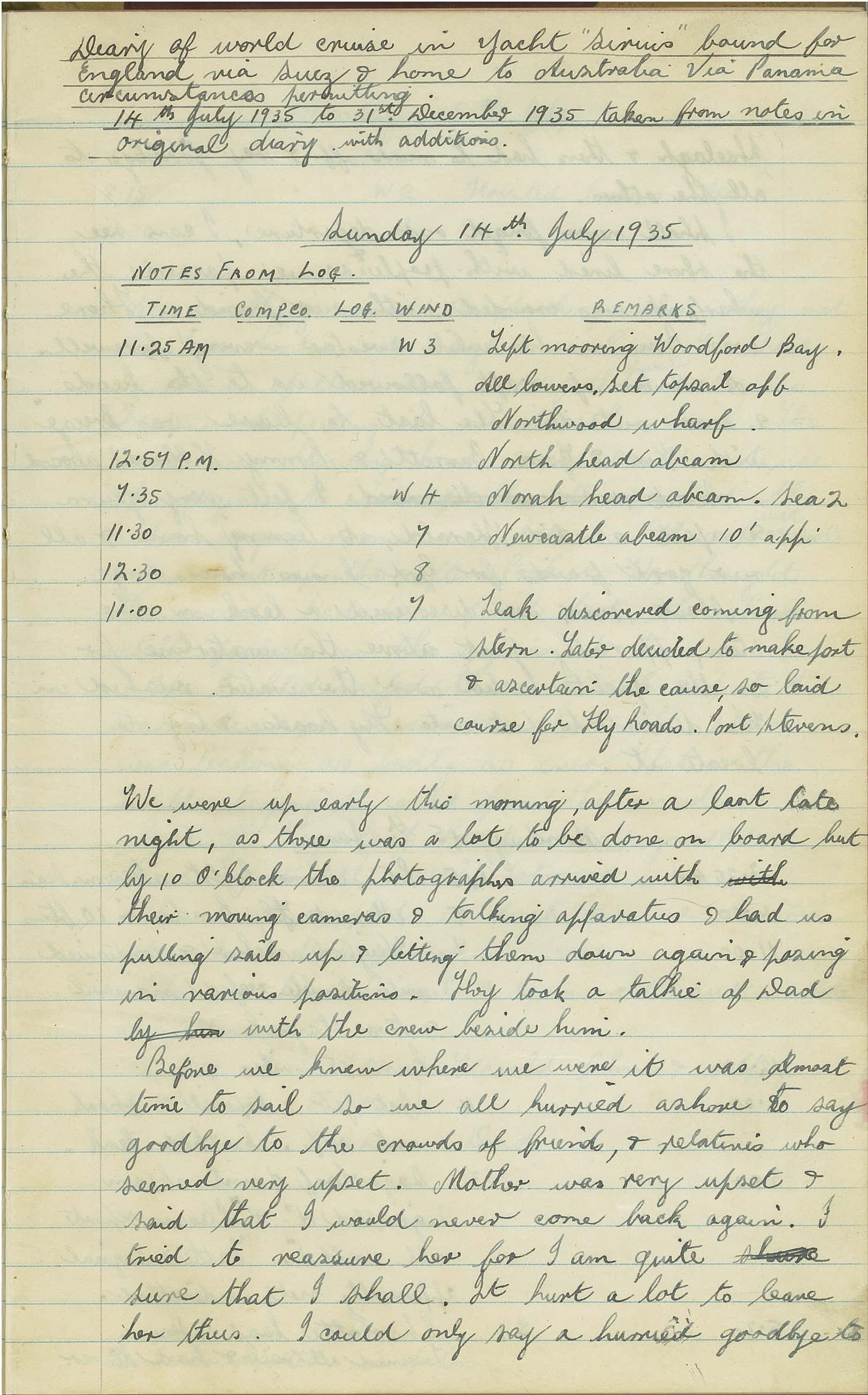
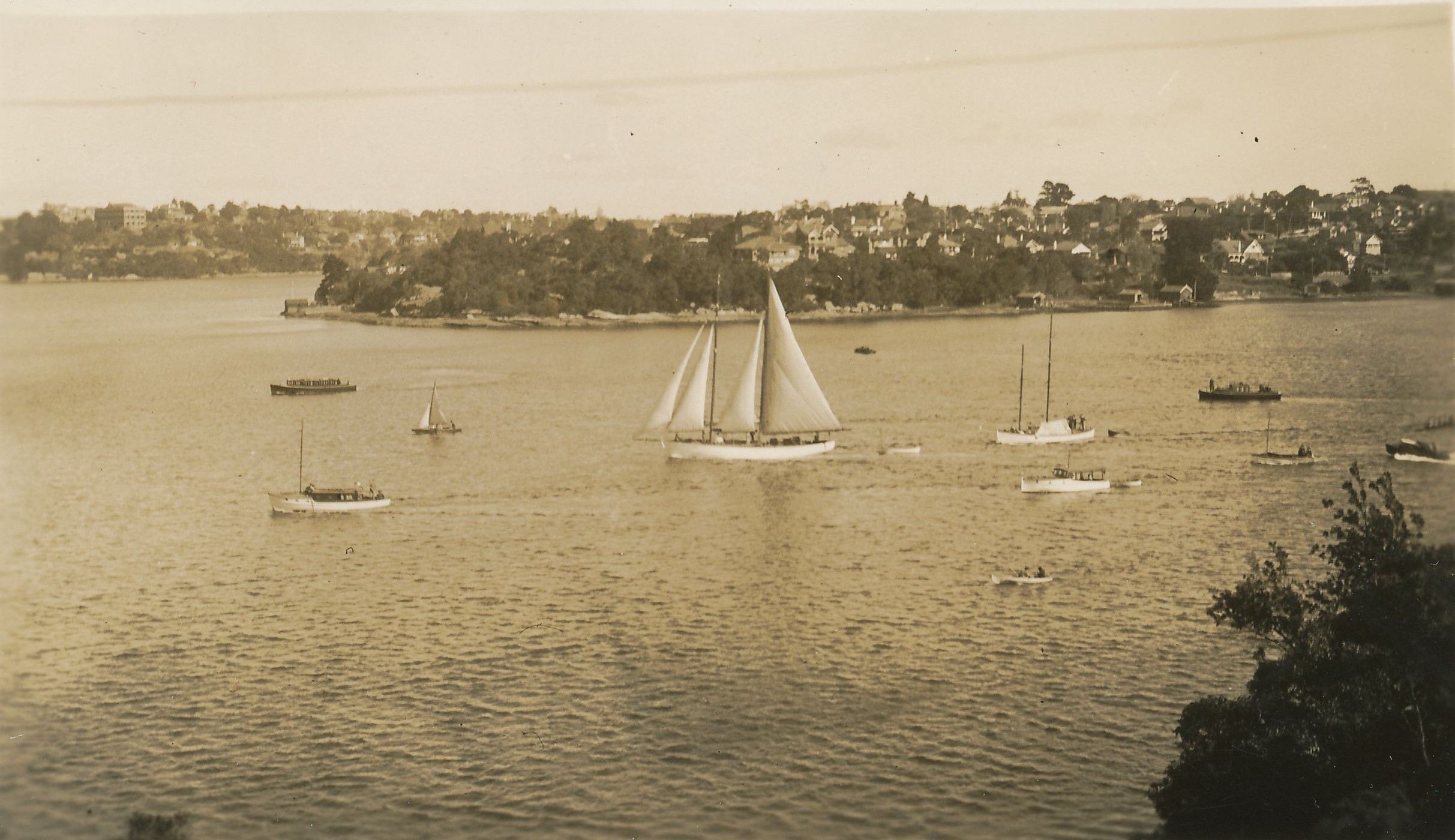
Moment of Departure - Woodford Bay - Nossiter family photograph
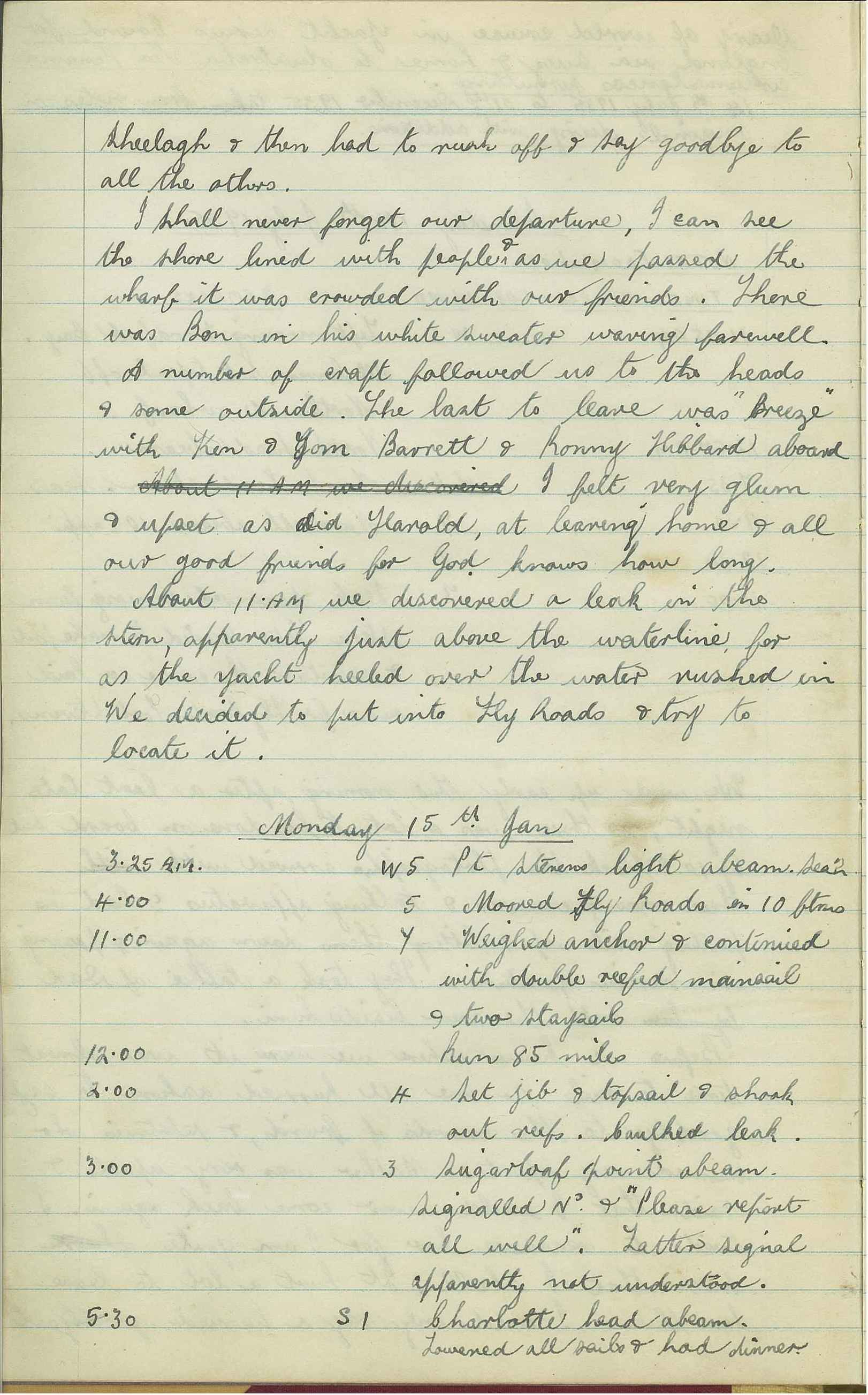
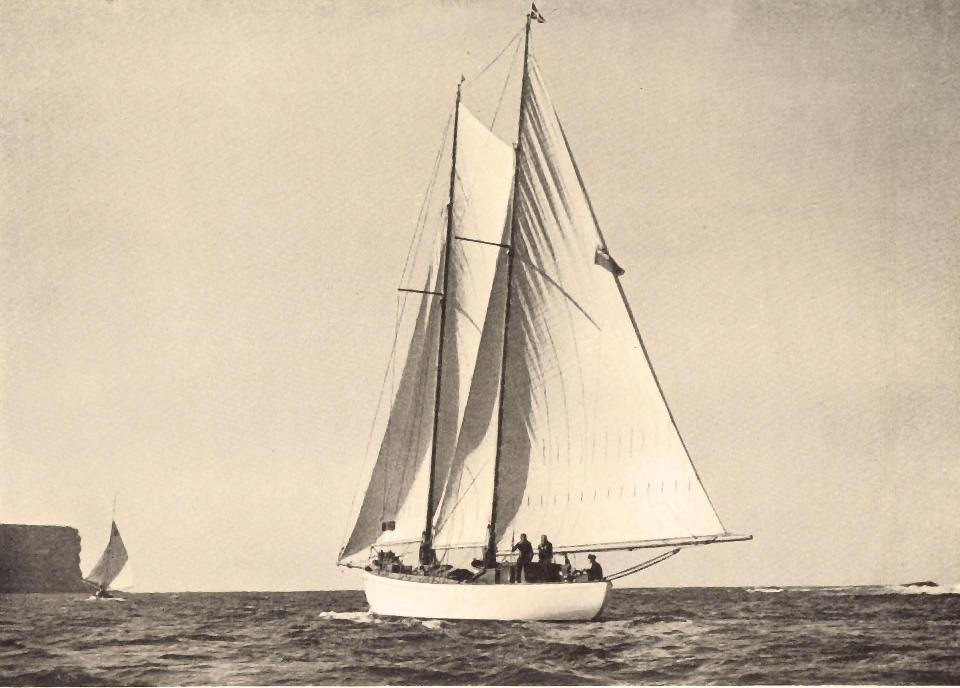
Departure through the Sydney Heads, outward bound.
OFF ON WORLD'S CRUISE
Mr. Nossiter's Aim
(By 'FOR'ARD HAND')
MR. HAROLD NOSSITER, for many years a prominent yachtsman in New South Wales waters, and who for several seasons won many valuable prizes with the Victorian built Utiekah II, which he sold some months ago, left Sydney in his new auxiliary-engined staysail schooner 'Sirius' on Sunday on a two years' cruise of the world, accompanied by his two sons Richard and Harold, and Mr. Clive Russell.
THE 'Sirius' is an expensively fitted craft, 53ft 61n over all, with a beam of 13ft 7in, and rigged to carry a large spread of canvas. The voyage will be made in a leisurely fashion, the projected route being through the East Indies, thence via Suez to England. Afterwards the 'Sirius' will cross the Atlantic to New York and will return via the Panama Canal. The navigator is Mr. Richard Nossiter, who has a master's certificate, having passed all examinations with first-class honors.
Mr. Nossiter was tendered a farewell dinner by the Royal Sydney Yacht Squadron on July 17. The Commodore, Mr. Paul Ross, presided, and was supported by Vice-Commodore J. L. Milson, and Rear-Commodore, Dr. R. I. Furber. They wished Mr. Nossiter a successful voyage, and Mr. Ross said that he hoped Mr. Nossiter will call on the leading yachting organisations of the world and will return with nautical information that should be of immense value to the boating men of Australia. He was presented with suitable gifts: letters of introduction and a burgee of the Royal Sydney Yacht Squadron.
The craft left Sydney in glorious sunshine, and was accompanied down the harbor from his home on the Lane Cove River by the fleet of the Royal Sydney Yacht Squadron and Royal Motor Yacht Club of N.S.W. It was a fitting farewell, and even the ferries on the harbor added their best wishes with sirens blasting a cock-a-doodle-doo.
OWNER'S FAREWELL MESSAGE
In a farewell message to 'The Referee,' Mr. Nossiter said that it had always been his ambition to circle the seven seas, and while abroad he would gather all the' information possible regarding yacht racing. 'Tell yachtsmen,' he said, 'that the 'Sirius' is fitted out to meet all kinds of weather, and when away I will endeavor to induce overseas enthusiasts to travel to this part of the world and take part in the big events in Australian waters.'
WIRELESS EQUIPMENT
The 'Sirius' has an Interesting wireless receiver. It will tune to entertainment, stages, and also to shortwave stations, which transmit international time signals. The Installation was designed by Amalgamated Wireless, Ltd. During the tests, signals of Paris on 25 metres came in as clearly as the local stations. Shell have laid down petrol supplies for the trip. OFF ON WORLD'S CRUISE (1935, July 18). Referee (Sydney, NSW : 1886 - 1939), p. 15. Retrieved from http://nla.gov.au/nla.news-article135514130
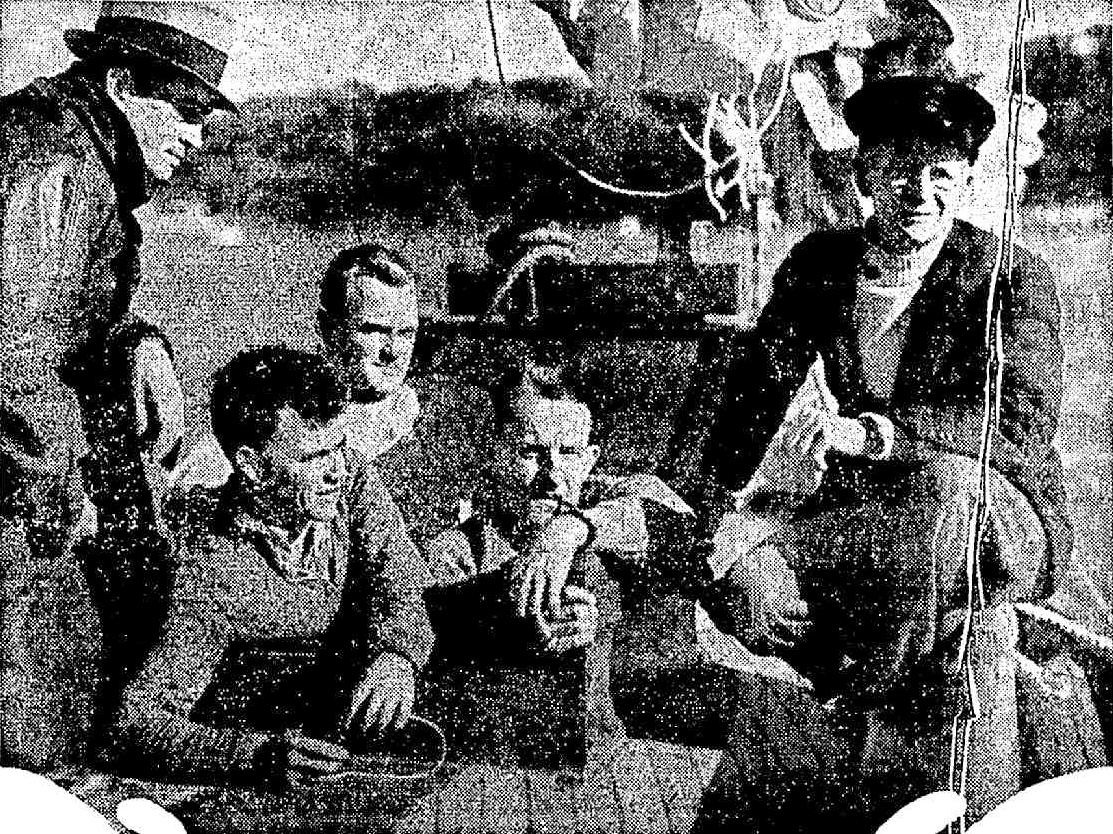
JUST BEFORE START OF LONG TRIP. — J. Beveridge (Shell Co.) bids farewell to the crew of the 'Sirius,' which left Sydney on Sunday for a two years cruise round the world. The members (from the left) Mr. Harold Nossiter junr., Dick Nossiter, Clive Russell and Harold Nossiter senr. They will travel by sail, but have an auxiliary engine in case of emergency. No title (1935, July 18). Referee (Sydney, NSW : 1886 - 1939), p. 14. Retrieved from http://nla.gov.au/nla.news-article135513985
Their route was to sail north of Papua New Guinea, then westward to Aden via Bali, Singapore and Colombo. The first landfall outside of Australia was to be Rabaul, New Guinea and the town duly appeared on the horizon dead ahead, which was very encouraging for Dick as the navigator.
A few days after they left:
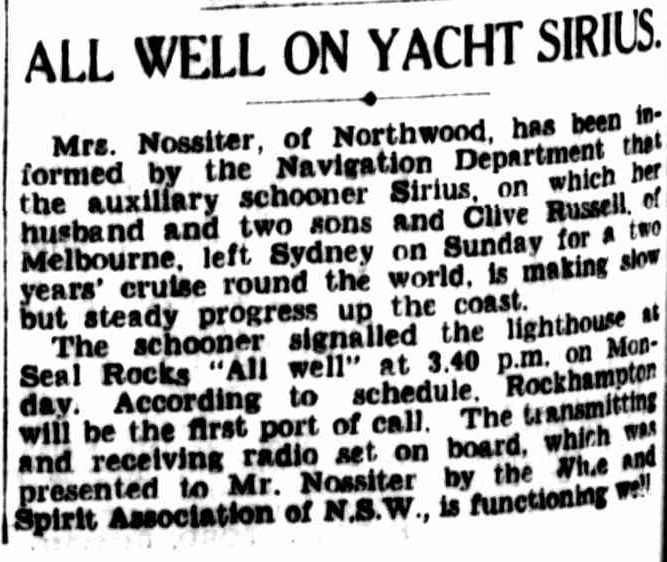
ALL WELL ON YACHT SIRIUS. (1935, July 17). The Sydney Morning Herald (NSW : 1842 - 1954), p. 12. Retrieved from http://nla.gov.au/nla.news-article17178788
PROW OF YACHT SIRIUS TURNED TO OPEN 'SEA
Sydney Party Leaves on World Tour
The dream of a lifetime of a father and his two sons was realised last week when the yacht, "Sirius," of 30 tons, sailed majjestically from Woodford Bay, Lane Cove (Sydney), on a world tour that will last two years. The crew comprises Mr. Harold Nossiter (of Northwood), his two sons, Harold (27) and Dick (25), and Mr. Clive Russell (28), of Melbourne.
The little vessel cleared the Heads at noon, and, according to advice received by the Shell Company, from Mr. Nossiter, the Great Barrier Reef is the first objective. Then they will go through Torres Straits to Thursday Island and New Guinea! where some unknown rivers will be explored. The Celebes, Borneo, Sumatra, Singapore, will next be visited, then Madras, Ceylon, Aden and, via Suez Canal, the Mediterranean ports; England, Norway, Canary Islands, and across the South Atlantic to Florida.
SOUTH SEA ISLANDS
The route will then be through the Panama Canal to Marquesse and Tahiti, and the most interesting part will be a six months' cruise among the South Sea Islands— scenes of romance and beauty — on to New Zealand and then across the Tasman for Sydney and home. All passports are vised by Soviet Russia. The Shell Company has arranged fuel and oil supplies at points covering the whole voyage, embracing many remote quarters of the globe. It is proposed by the party to indulge in a good deal of big game shooting, besides other unknown thrills. Many hundreds assembled on the foreshores to bid the sailors bon voyage, and, as the sails were hoisted and the anchor weighed, cheers rang out.
INBORN LOVE
Years ago, when Harold, the younger, and Dick were little boys and their father toiled in a commercial counting-house they tried to emulate his example as a well-known yachtsman, and, with inborn love of adventure, pored over the pages of "Coral Island," "Treasure Island," and other books. With his growing family, Mr. Nossiter made them a promise. "Some day," he said, "when you are men, I will build a yacht and take you round the world." The family grew up. There are two younger boys, Ben and Jack. After 40 years, Mr. Nossiter earned his retirement, and, having been successful, had the yacht built. Perhaps the saddest part of the sailing was that the younger boys had to be left behind, their education not having been completed.
ALL-AUSTRALIAN
Mr. Harold Nossiter, the owner and captain of the yacht, is one of Sydney's best-known yachtsmen, and his new acquisition, built some months ago by Hayes and Son, of Careening Cove, is capable of carrying 3000 feet of canvas when fully rigged. She is absolutely Australian from stem to stern; and is beautifully equipped.
A unique feature is a 50-year-old binnacle, originally fitted to a barque trading to Australia, purchased in a second-hand shop, which will be relied upon in the navigation. The yacht, which is staysail rigged, is 53 feet 6in. long, with a beam, of 13 feet 6ins., and is powered (in case of emergency) with an auxiliary 18-horsepower petrol engine. She carried 300 gallon's of water below; deck and 52 gallons of petrol on deck, besides nearly a ton of stores.
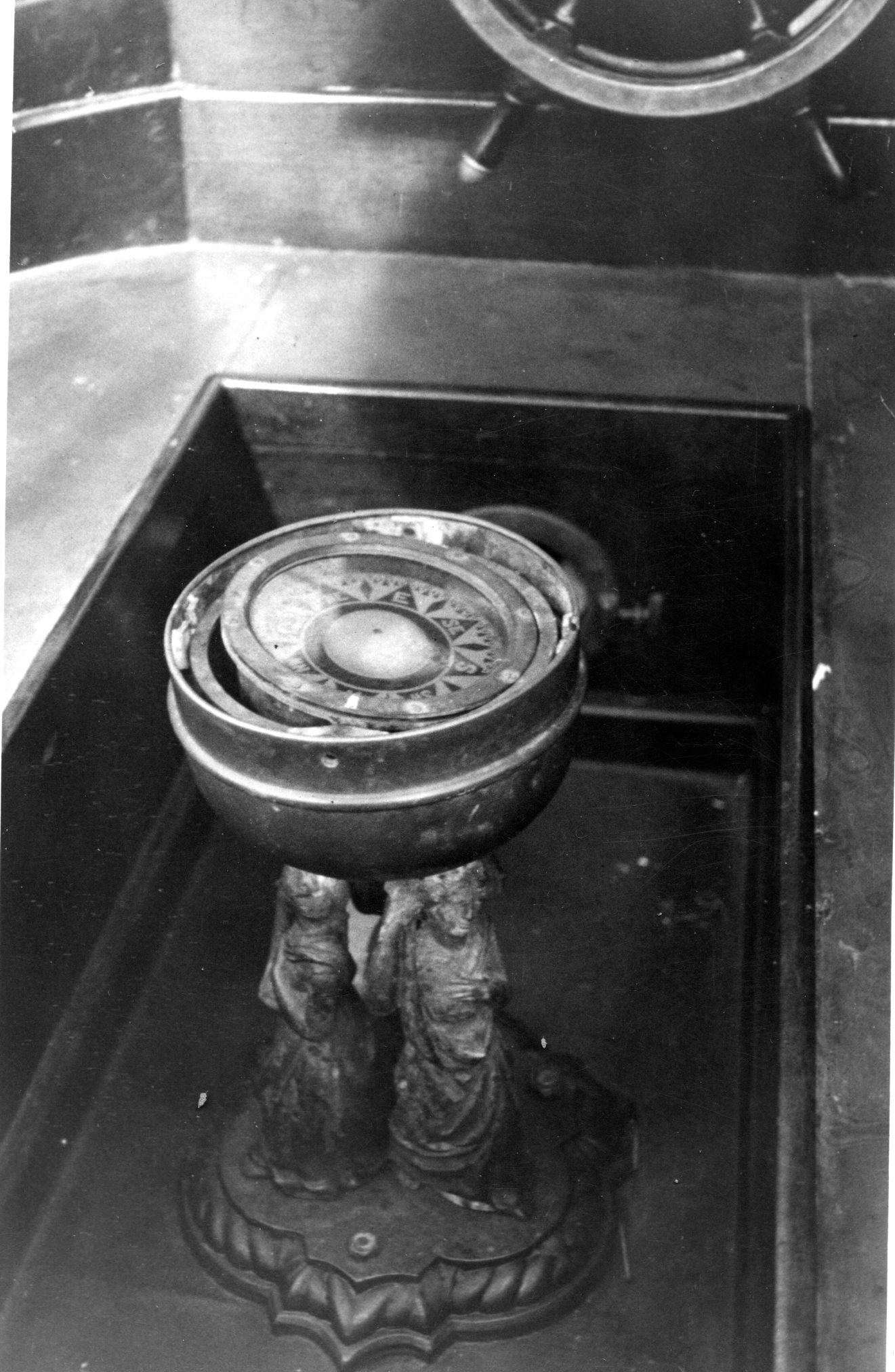
Sirius binnacle and compass - Nossiter family photo
BELOW DECKS
Below decks she is honeycombed with lockers; there are two bunks in the main cabin, two in the forecastle, one in the captain's cabin, one aft the engine-room, and the settees carried can accommodate four more. A powerful receiving wireless set is carried in order that contact may be maintained throughout the voyage. PROW OF YACHT SIRIUS (1935, July 27). Tweed Daily (Murwillumbah, NSW : 1914 - 1949), p. 3. Retrieved from http://nla.gov.au/nla.news-article194222678
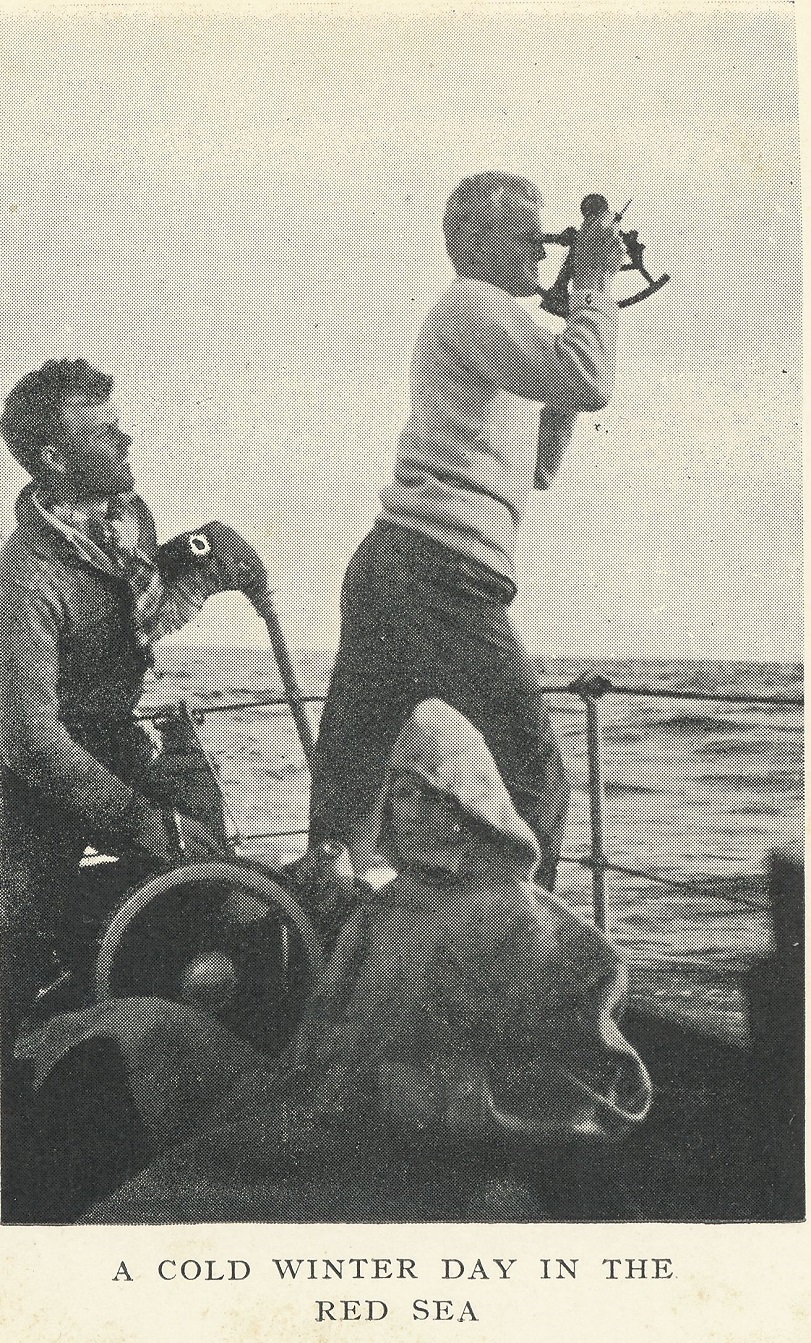
Richard at sea with sextant
Sailors' Superstition
A SUPERSTITION among sailors is that the tail of a game fish nailed to the end of the bowsprit ensures fair winds and safe guidance. Mr. E. P. Andreas, noted game fisherman and yachtsman, bethought himself of this as his friend, Mr. Harold Nossiter, was about to set out on a world cruise in his yacht, Sirius, and presented the owner-skipper with the tail of a tunney. This was stowed away, but heavy head winds, encountered between Sydney and the Clarence River entrance, impelled Mr. Nossiter to respect the superstition. Thereafter he had fair winds to Rabaul, from where he wrote to express his faith in the tunney tail. A Stroller in the TOWN (1935, August 21). The Daily Telegraph (Sydney, NSW : 1931 - 1954), p. 6. Retrieved from http://nla.gov.au/nla.news-article246598210
Natives Knew Of The News
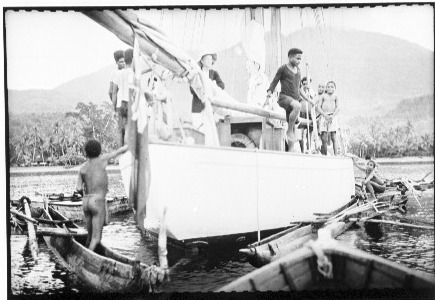 THROUGH a native servant, "bush telegraphy" apprised a New Guinea settler of the approach of Mr Harold Nossiter's yacht, Sirius, two days before Its arrival. This Incident, which he described as "most extraordinary." was related by Mr. Nossiter in a broadcast last night dealing with his voyage round the world in the Sirius, which ended when he returned to Sydney last Thursday.
THROUGH a native servant, "bush telegraphy" apprised a New Guinea settler of the approach of Mr Harold Nossiter's yacht, Sirius, two days before Its arrival. This Incident, which he described as "most extraordinary." was related by Mr. Nossiter in a broadcast last night dealing with his voyage round the world in the Sirius, which ended when he returned to Sydney last Thursday.
This incident, which he described as “most extraordinary” was related by Mr. Nossiter in broadcast last night dealing with his voyage around the world in the yacht Sirius which came to an end when he returned to Sydney last Thursday.
On another occasion the radio came to his rescue in on encounter with friendly natives who became too friendly. "They came aboard uninvited, and before I knew where I was they were swarming all over the deck. Then I switched the radio on, and it was not long before I had a' clear deck," he added. Mr. Nossiter's chief impression of Colombo was that "begging was rife and robbery a common-place."
On the return voyage through the Pacific Islands, the Sirius narrowly escaped destruction by an enormous waterspout, and near the Australian coast the yacht encountered one of the roughest gales of the trip. "We hove to for three days practically within a stone's throw of Sydney," said Mr. Nossiter. Natives Knew Of The News (1937, May 26). The Labor Daily (Sydney, NSW : 1924 - 1938), p. 4. Retrieved from http://nla.gov.au/nla.news-article236459981
On August 10th they left Rabaul and sailed to Buton and Komodo where they saw the twelve foot dragon lizards, varanus komodoensis and Dick made a hole in the boat:
"Dad had an accident while sitting on his bunk cleaning his Winchester rifle. He accidentally discharged it shooting a hole right through the hull, luckily above the waterline. His father was not impressed and it's a story we heard a lot about." - Tim Nossiter
.jpg?timestamp=1557361036493)
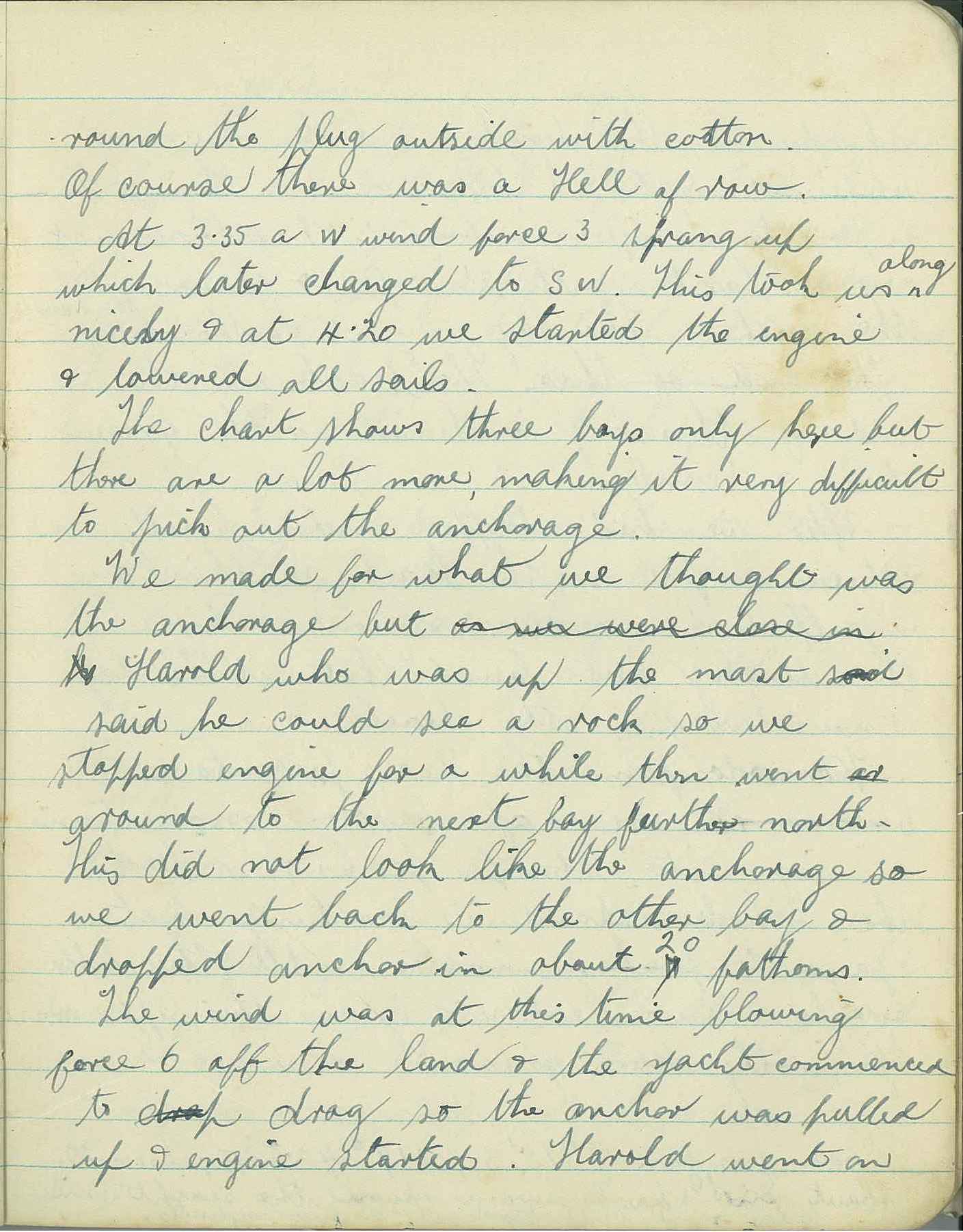
YACHT SIRIUS.
Arrival at Buton.
The yacht Sirius, which left Sydney in July on a world cruise, has been reported at Buton, In the Netherlands East Indies.
Mr. H. Nossiter, son of the owner of the vessel, in a letter received in Sydney, says that, after leaving Rabaul on August 10, they proceeded to a small village in Dutch New Guinea, and after a short stay continued the voyage round the north of New Guinea and New Britain, through the Dampier Strait, and across the Seranj and Molucca seas, passing north of the Spice Islands, of Amboina and Buro.
Mr. Nossiter said that they Intended to stop before reaching Buton, but, owing to bad weather, they were unable to make port. He also said that the crew was well, and that the small craft was behaving as well as could be expected. YACHT SIRIUS. (1935, October 5). The Sydney Morning Herald (NSW : 1842 - 1954), p. 16. Retrieved from http://nla.gov.au/nla.news-article17232468
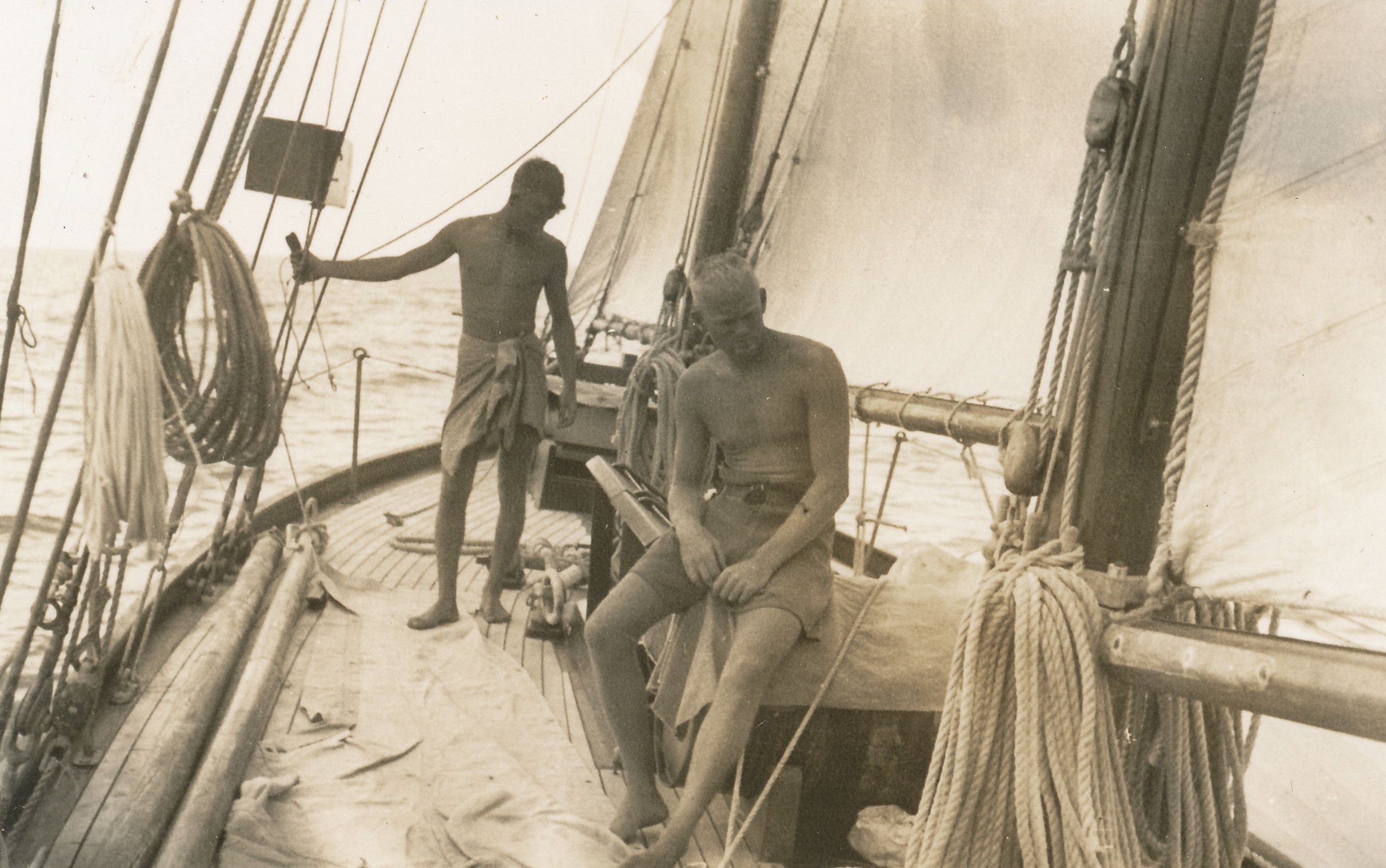
The Nossiter sons at sea aboard the Sirius
Clive Russell the most inexperienced of the crew had a bad experience at the helm one night. He became confused and almost put the Sirius on a reef. Harold Nossiter awoke to the sound of the breaking waves and managed to start the engine in time to avoid disaster by twenty feet.
Nossiter considered abandoning the circumnavigation after this incident, suggesting just circumnavigating Australia instead but the eldest crew member, his son Harold was determined to continue and he urged on the rest of the crew.
"This photo is a girl, Dee, that Dad obviously became very attached to while in Batavia/Jakarta and I happened to find the photo his brother took of them at the time." - Tim Nossiter
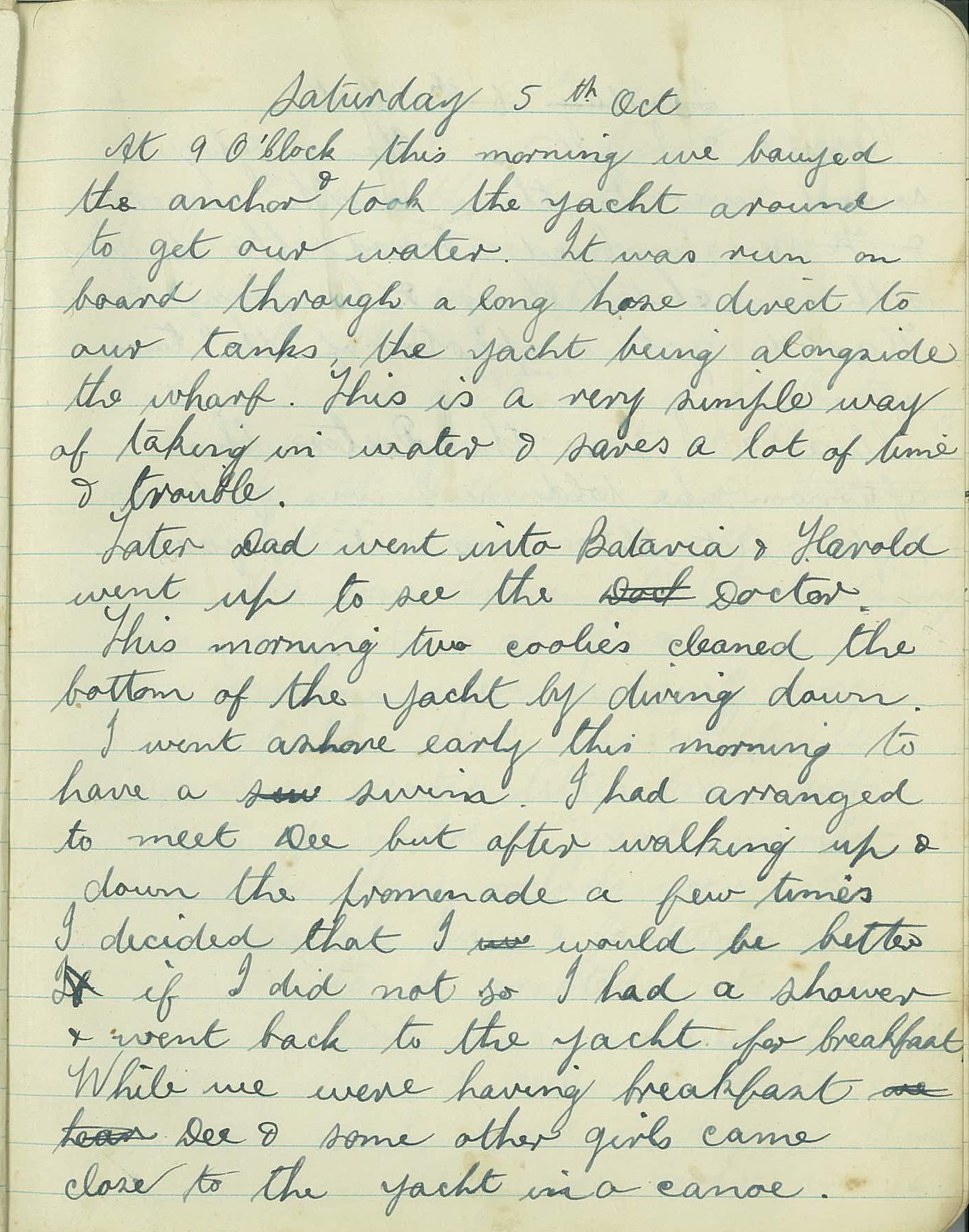
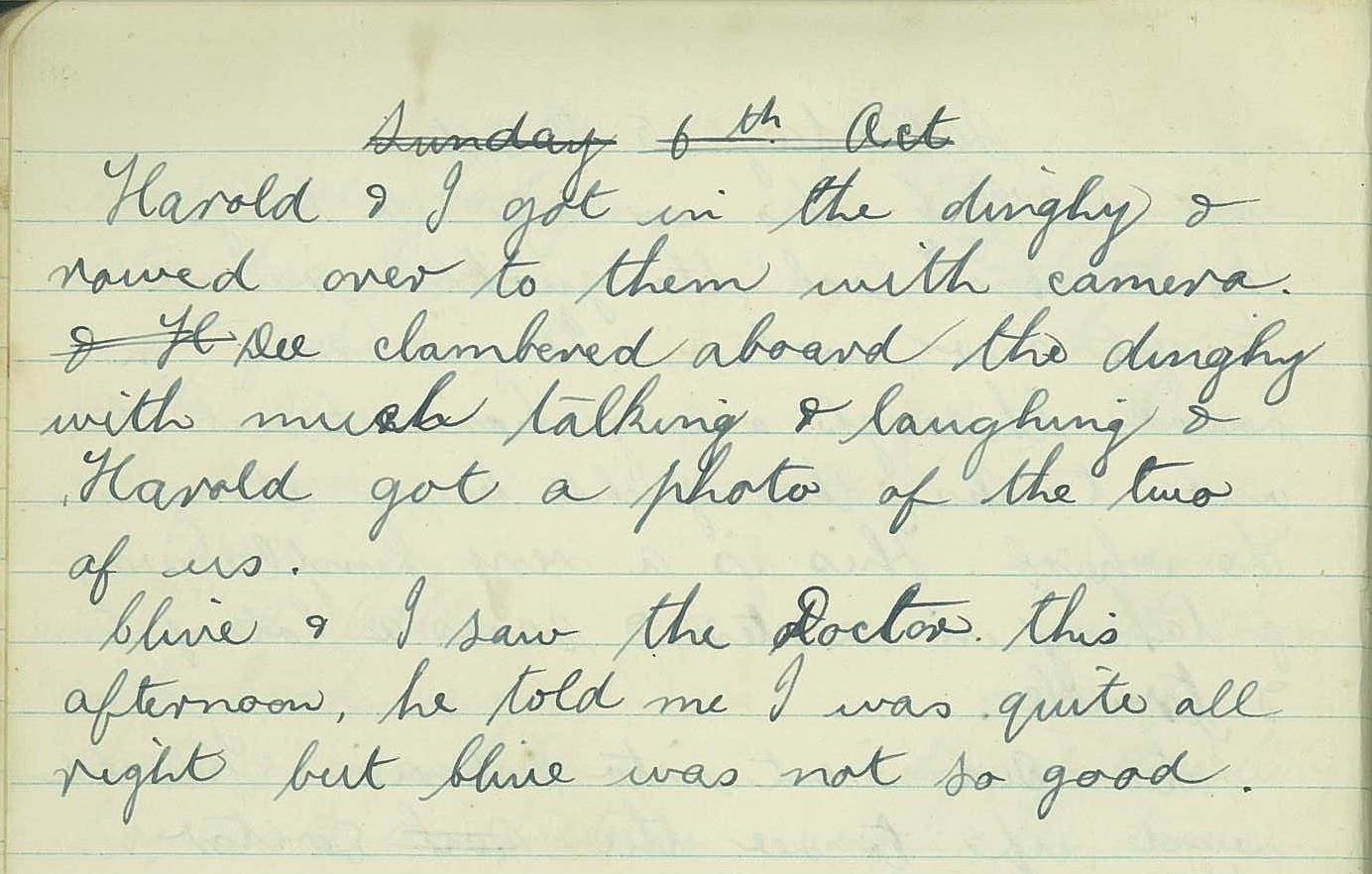
They pressed on to Bali and Batavia (Jakarta), Indonesia then Singapore and Penang where the Sirius was hauled out to have the hull cleaned and anti-fouled.

Sirius slipped for maintenance during the voyage
They came off the slip on November 10th and set sail for Langkawi where they moored in Kuah on the 16th. There, Tunku Abdul Rahman, a son of the Sultan of Kedah and a Thai Princess was in charge of the district. He and his wife, an Englishwoman made their stay very pleasant and entertained the crew at their home several times. The Tunku who later became the first Prime Minister of Malaysia gave the eldest son Harold, a Malay Kris.
The next stop was in Colombo where, due to nerve-strain, Clive Russell disembarked. His father flew from Australia to take him home.
ONE OUT
MELBOURNE MAN LEAVES THE SIRIUS AT ADEN
After seven months on the yacht Sirius, which is on a two years' world pleasure cruise, Mr. Clive Russell, of Melbourne, has broken down in health and is returning home.
The Sirius, according to a letter received yesterday by Mrs, Nossiter, of Northwood, arrived at Aden on January 17, after a 22-day trip from Colombo. Mr. Nossiter, the owner, and his two sons, who comprise the crew, are well however, and the latter stated that they had attended a number of functions arranged by officers of English cruisers at Aden. ONE OUT (1936, February 11). The Daily Telegraph (Sydney, NSW : 1931 - 1954), p. 6. Retrieved from http://nla.gov.au/nla.news-article246483951
THE complement I have mentioned before; but at Colombo Mr. Russell, who prior to the start of the trip had had little seafaring experience, found the nerve-strain too much for him, and he had reluctantly to discontinue the voyage.
In Mr. Nossiter's own words :
He learned to steer quite well and was always willing, but, through lack of experience and a seasense, would carry on a course given him when sudden circumstances and conditions called for a change. Furthermore, the responsibility of steering alone at night affected his nerves, till he would wake at night in his cabin and flash his torch about looking for the compass, thinking he was still steering. His loss was greatly regretted by the rest of the crew, not only because it increased the duties of the others, but mainly because his companionship was badly missed. An Australian Odyssey (1937, June 2). Sydney Mail (NSW : 1912 - 1938), p. 17. Retrieved from http://nla.gov.au/nla.news-article160502496
On the next leg of the journey to Aden with the wind almost dead aft, in a confused and nasty sea, the crew were having difficulty steering as Dick Nossiter recalls with a chuckle; -
"We told father it was impossible to steer that course but he insisted it could be done and he took control. While steering at night the boom swung over and the yacht gybed breaking the boom. After that whenever he told us that we were doing something wrong we could always remind him that he broke the boom!"
Sirius careened in Aden
Dick was the Navigator and with his sextant and almanac he guided the vessel accurately throughout, making good landfalls. They passed through the Suez Canal and across the Mediterranean stopping at Crete and Cephalonia then passing through the Corinth Canal.
AT ATHENS
Nossiter Yacht Party
Although a rough trip was experienced in the Mediterranean by Mr. H. Nossiter and his two sons, of Northwood, in their yacht, Sirius, they arrived at Athens, Greece, safely. Mrs. Nossiter, wife of the owner, received a letter to-day, and in it Mr. Nossiter said that violent seas had upset the party, but the boat had behaved well. The Sirius will next call at Naples. AT ATHENS (1936, April 27). The Sun (Sydney, NSW : 1910 - 1954), p. 13 (COUNTRY EDITION). Retrieved from http://nla.gov.au/nla.news-article230821366
The rest of the trek across the Mediterranean was very hard with head winds and storms all the way.
At Malta as they could not get her slipped, the midshipmen from HMS Australia offered to clean the bottom of the yacht by diving. Harold Jnr. wrote to his mother of Malta - these letters home illustrating that the voyage was also an education in the places visited as much as the sailing prowess and resilience required:
VISIT TO MALTA.
YACHT'S VOYAGE.
FORTS AND FIGHTING 'PLANES.
An Interesting letter, descriptive of places of historic interest, has been received by Mrs. H. Nossiter from her son, Mr. Harold Nossiter, one of the party aboard the auxiliary schooner yacht Sirius, which arrived at Plymouth recently from Sydney. The letter was writ-ten while the Sirius was in the Mediterranean, on its voyage to England.
Mr. Nossiter writes:-
"Malta, one of the most Interesting places we have called at, is little known to the tourist, as ships stay there only for a few hours, and passengers have no time properly to see It. Valetta, the town where we were moored, is built right to the water's edge. It is on a hill, amid enormous fortifications rising sheer from the harbour, that the main part of Valetta Is built. The streets are narrow-so narrow in some places that they completely shut out the sun.
"Buildings erected by the old knights of St. John crusaders who settled in Malta after their wars in the Holy Land-Invest Valetta with much historical interest. Amongst the places I visited was the palace, where the armour and the weapons of the knights are now stored. There were hundreds of suits of armour; battle axes; swords, clubs, pistols, old-fashioned guns, and so on. In another room, enormous tapestries hung from the walls.
Dotted about the country are the castles and churches still standing to-day as a reminder of the historic past.
"Malta is quite unspoilt, because of the fact that it is practically unknown to the tourist. The milkman amused me. He walks along the street with a string of goats behind him, and milks them direct into his customers' jugs,
"The armoury, forts, and aeroplanes at Malta are more than can be Imagined. We were taken out to the aerodrome for lunch, and saw enormous bombing and torpedo 'planes, and other aircraft. I saw a dozen 'planes in course of exercises, and there were probably more." VISIT TO MALTA. (1936, June 10). The Sydney Morning Herald (NSW : 1842 - 1954), p. 12. Retrieved from http://nla.gov.au/nla.news-article17241742
They left Malta with an addition to the crew, a young cat which they named Oliver Twist as the animal was always asking for more food.
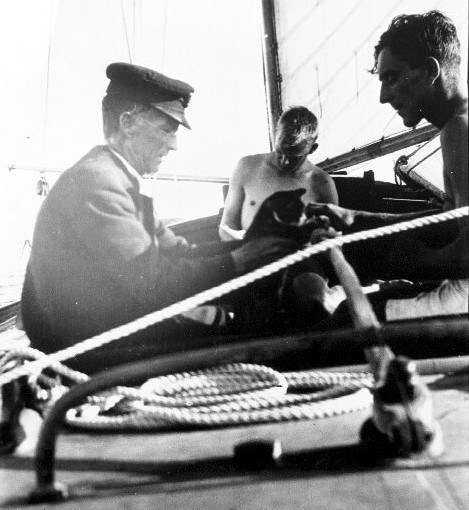
The journey to Gibraltar in April 1936 was hard with gale force winds on the nose and the cat had to be kept below. He became more and more annoying until one day he disappeared and was never found. Harold Jnr. later confessed that he perpetrated the dark deed, as he felt that "in the ocean his troubles would soon be over-including our own as far as he was concerned - especially with the sea running at the time".
They entered the Atlantic on May 12th and sailed past Cape Finisterre and across the Bay of Biscay to anchor in Plymouth, England, on June 2nd. In the log book, Harold wrote “How apt are the words:- ‘For England home and beauty.’ ”
The Sirius had come through the rough and tumble of the voyage very well and showed no signs whatever of strain. They were not affected by sea-sickness during the voyage, never missed a meal and could always stay below in the worst weather without feeling any discomfort. The news of the voyage so far was reported at home, including a hailstorm off Italy when the cockpit and gunwales were full of ice and nearly being wrecked off Singapore:
Australian Yacht . . . . . . . . Reaches England.
Mr. Harry Nossiter, well-known Sydney yachtsman, who set out from Sydney in July of last year on a two-year cruise round the world in his 30-ton yacht “Sirius,” has now reached Plymouth. England, according to advice from the Shell Company. Mr. Nossiter, who is accompanied by his two sons, made the journey vra Singapore and the Red Sea, and will return to Australia via Panama, the South Sea Islands and New Zealand, in the autumn after visiting Norway, the Canary Islands and Florida. The “Sirius” completed the long voyage to England without mishap, and the crew did not have a single day's illness. After leaving Sydney, the little craft proceeded to Rabaul, and spent a week around New Guinea. Forty natives boarded the yacht and traded food for tobacco. The voyage was then made via Buton, Komodo, Bali, Batavia, Singapore, Penang. Langkawi, Colombo and Aden. The passage from Colombo to Aden, 2100 miles, occupied 17 days, the best .performance of the voyage. The Red Sea, 1200 miles, was traversed in 15 days. From Port Said the “Sirius" went to Crete, and thence to Piraeus, the Ionian Islands, Malta and Gibraltar She was forced to heave to on several occasions in the Mediterranean, owing to gales of a velocity of 60 miles an hour. She narrowly escaped wreck at Singapore owing to the lack of wind causing a tidal drift towards the breakers. The worst weather was between Malta and Gibraltar. The cockpit and deck were covered with hail and snow, which became blocks of ice.
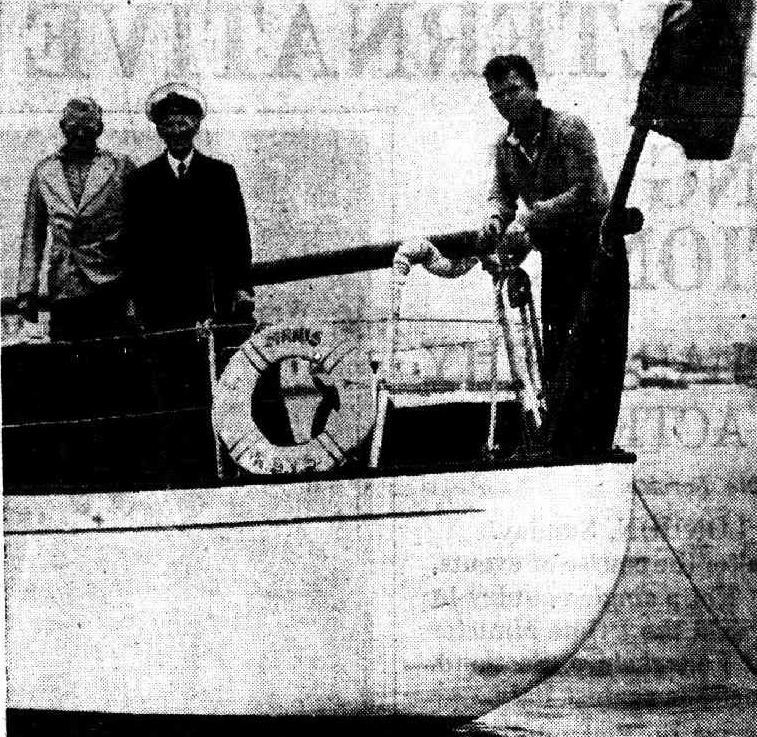
Australian Yacht . . . . . . . . Reaches England. (1936, July 9). Shepparton Advertiser (Vic. : 1914 - 1953), p. 6. Retrieved from http://nla.gov.au/nla.news-article168146489
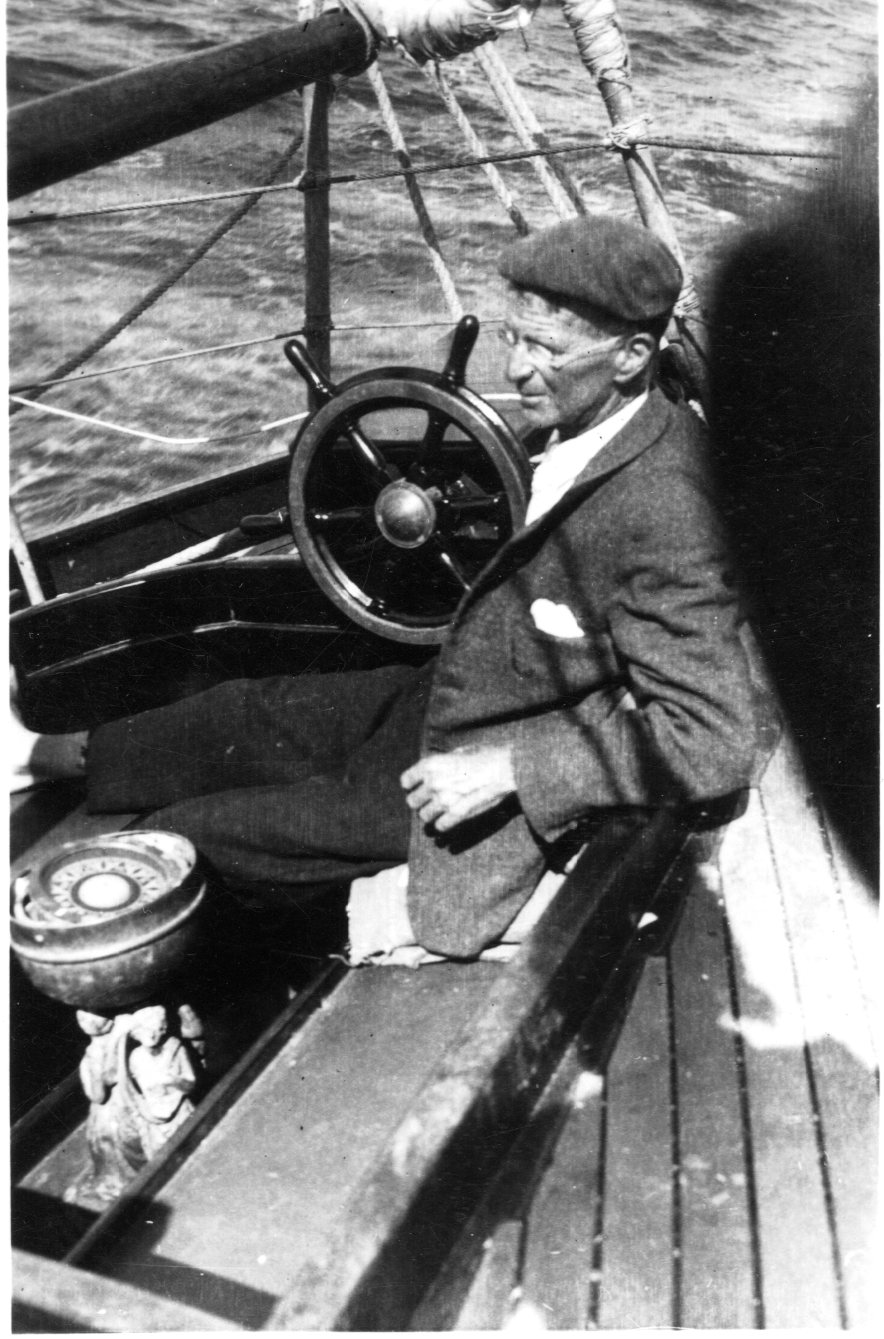
Skipper steering at sea
While in Plymouth they had the yacht slipped at Cremyll where she was repainted and anti fouled. A new boom was made to replace the broken one and the deck erections were scraped and varnished. Sirius was out of the water for eleven days so the crew took the opportunity to see some of the countryside of Devon and Cornwall. The Commander-in-Chief at Devonport, and Lady Drax invited them to lunch one day and later the Admiral visited the yacht. A few days later they sailed to Dartmouth where Rear Admiral Holt gave them a mooring off the Royal Naval College. While there, Harold Nossiter visited London for the first time. He was impressed with everything including the Tube but after this visit he avoided the suburban trains whenever possible, finding them poor compared to those in Australia.
The next port of call was Torquay, then Southampton where, as a fellow RPAYC Member and former Commodore Walter Marks had done two decades before in meeting Sir Thomas Lipton, he met with an America's Cup challenger. Interestingly the new boat of Thomas Octave Murdoch Sopwith built at Gosport from the design of Charles E. Nicholson, was the same gentleman who drew the plans for the Shamrock IV and the Shamrock V, the Lipton America's Cup Challenger yachts. Added interest for Harold Snr. must have come due to his winning the Lipton Cup in 1932.
NECK AND NECK STRUGGLE
Yachts in Lipton Cup Contest FINAL RACES
PARTICULAR interest will centre In Saturday's handicap race for big class yachts, as A. F. Albert's Norn and H. Nossiter's Utiekah II. are level in the point-score for the Sir Thomas Lipton Cup championship trophy. Saturday's racing will conclude the Prince Edward Yacht Club 1931-32 season. In addition to the race for big class yachts, there will be a 12ft. cadet dinghies' handicap and a scratch race for restricted class yachts. All races will start and finish opposite the Prince Edward Club House, Wolseley Road, Point Piper. NECK AND NECK STRUGGLE (1932, March 3). The Daily Telegraph (Sydney, NSW : 1931 - 1954), p. 3. Retrieved from http://nla.gov.au/nla.news-article246555855
Sir Thomas Lipton instituted a number of Lipton Cups all over the world for boating and sailing competitions commencing in 1902. The first two in Australia were given to Tasmania and Victoria, with Lipton Cups in New South Wales following:
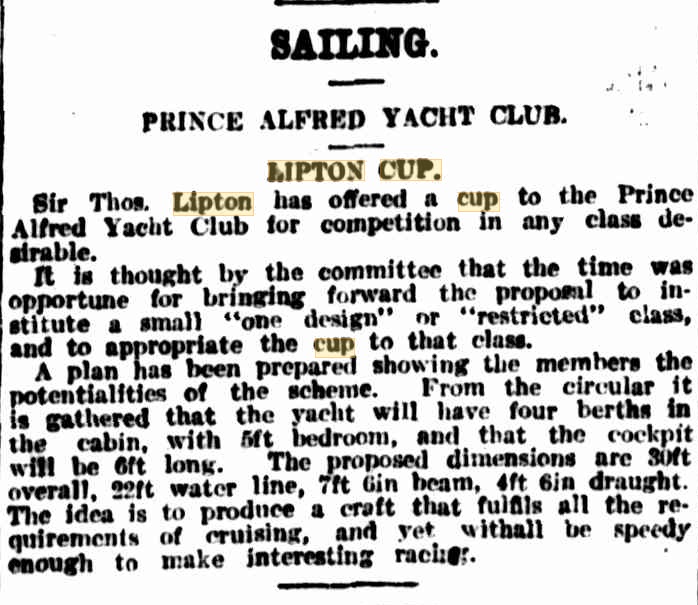
SAILING. (1908, May 9). The Sydney Morning Herald (NSW : 1842 - 1954), p. 16. Retrieved from http://nla.gov.au/nla.news-article14925522
THE LIPTON CUP
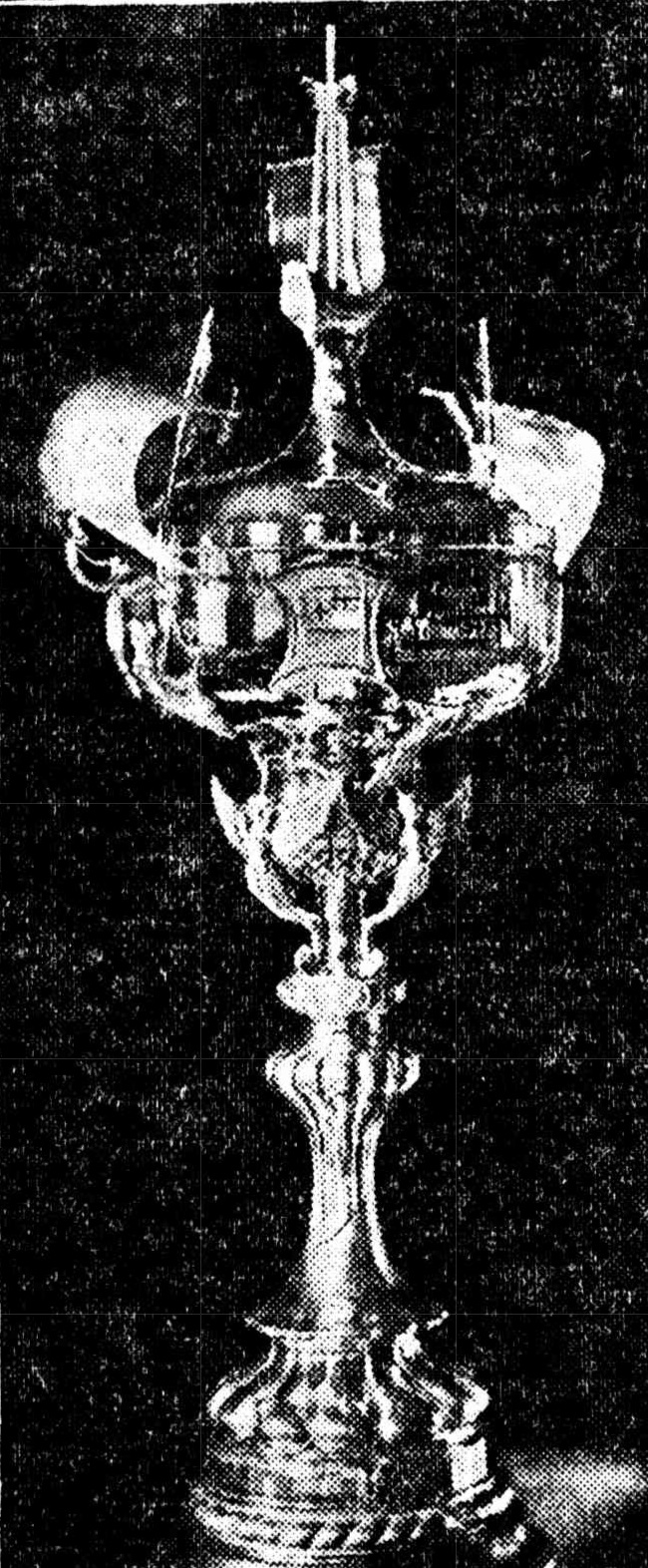
THE CHALLENGE CUP PRESENTED TO THE ROYAL PRINCE ALFRED YACHT CLUB BY SIR THOMAS LIPTON. THE LIPTON CUP (1920, June 10). The Daily Telegraph (Sydney, NSW : 1883 - 1930), p. 4. Retrieved from http://nla.gov.au/nla.news-article239627914
The RPAYC Lipton Cup is still on display in the clubhouse at Newport, replete with the Shamrock:
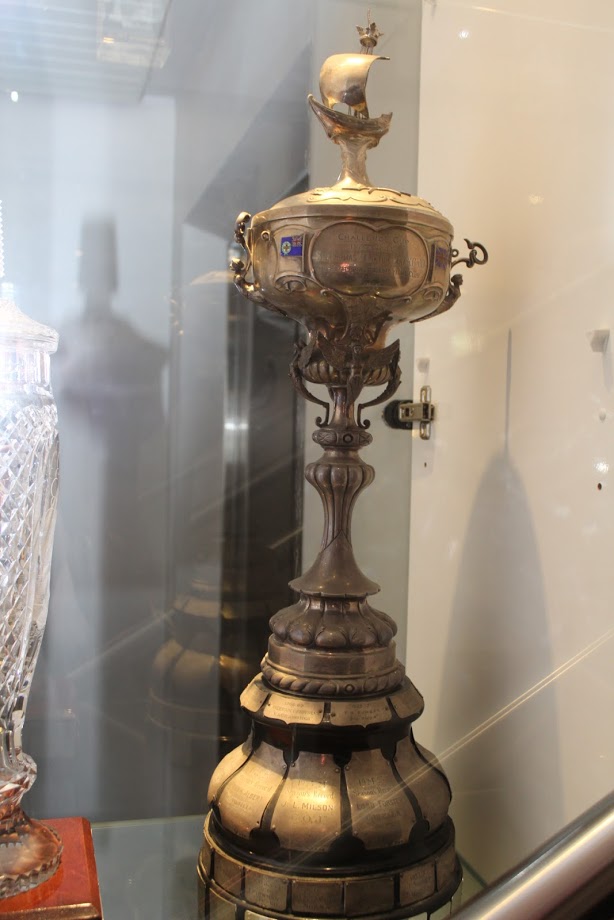
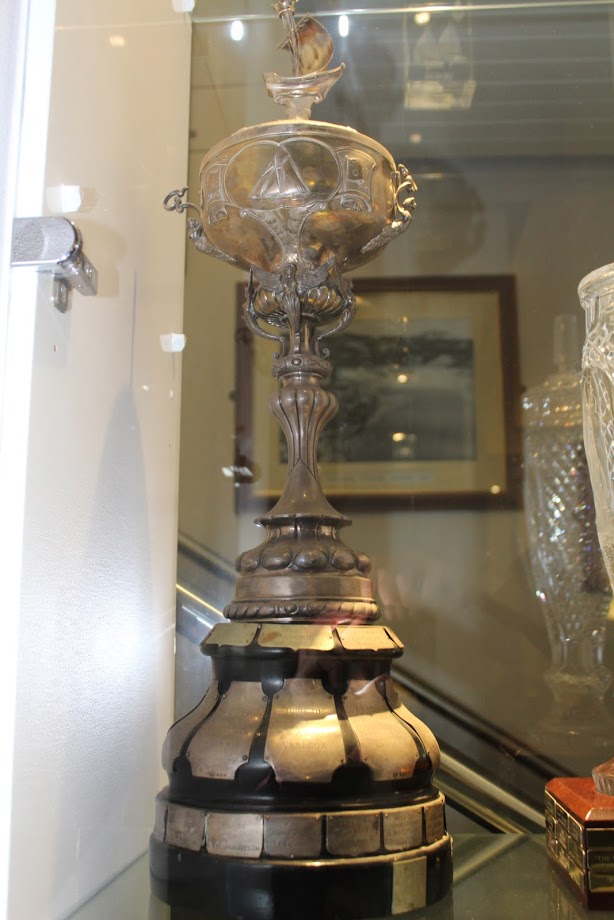
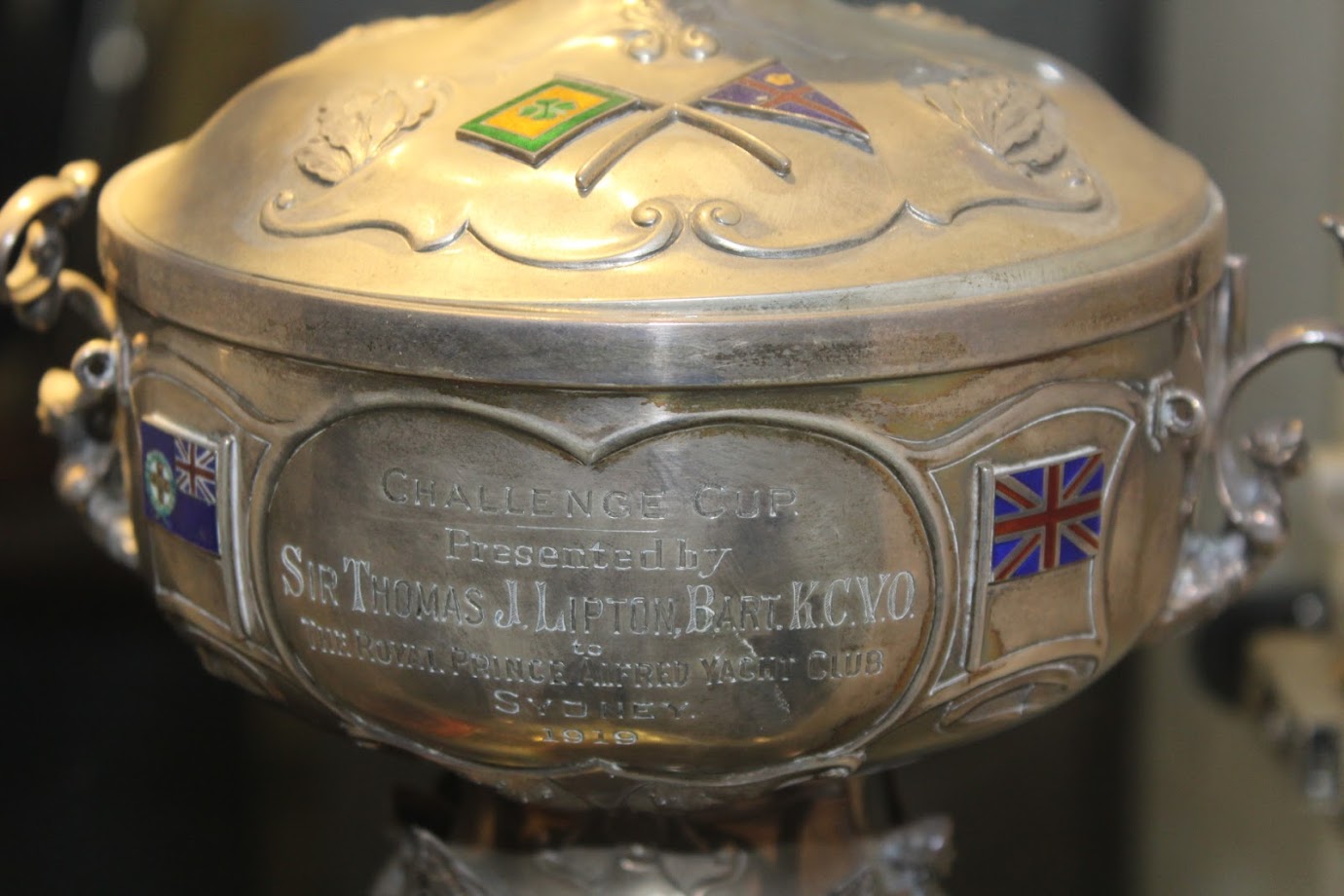
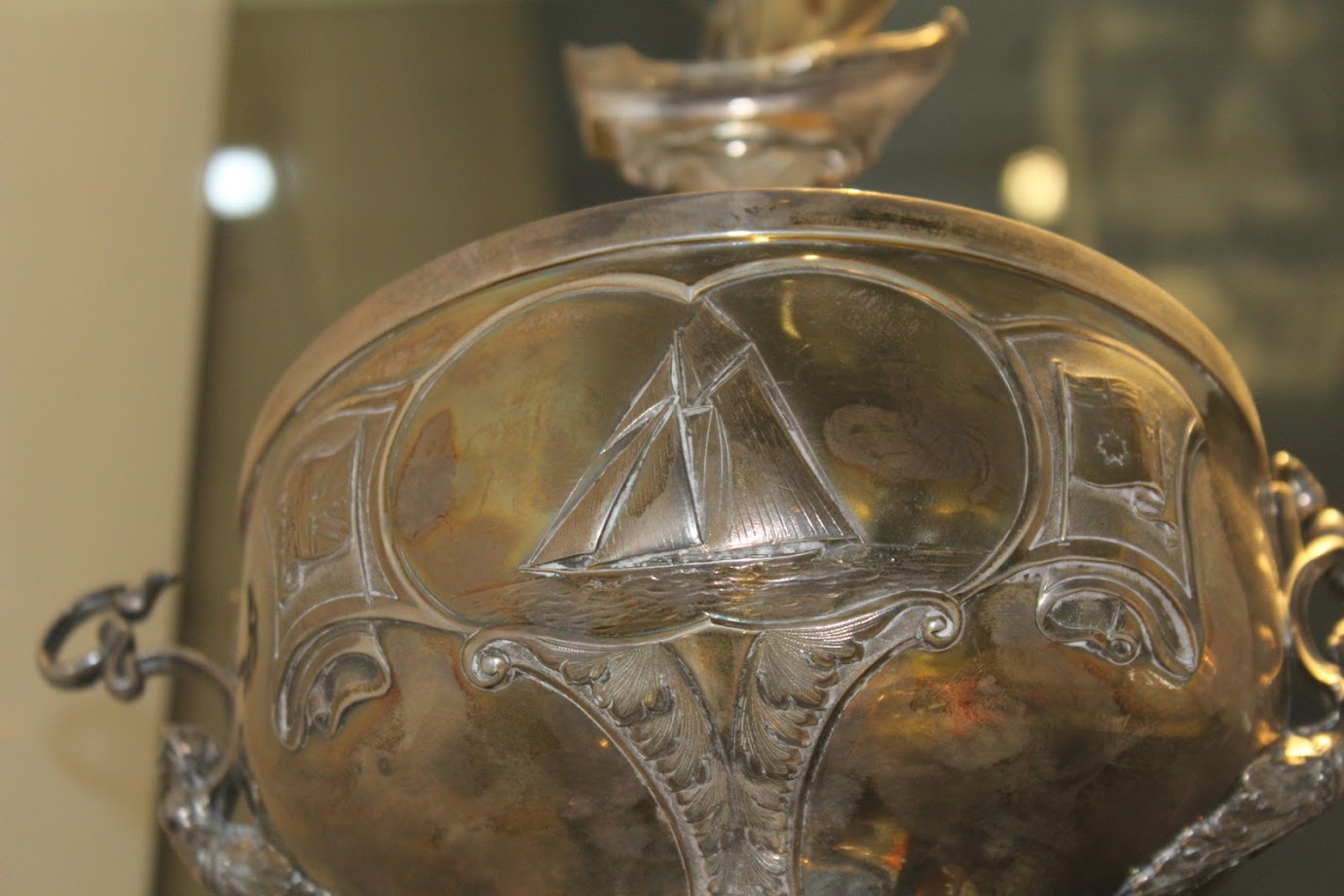
Mr. Nossiter Writes From England
IN an interesting letter received by 'For'ard hand,' of 'The Referee,' from Mr. Harold Nossiter, who, with his two sons, are sailing round the world, in the 52 ft yacht Sirius, Mr.' Nossiter says: — 'WELL, we have arrived in England ' Well ahead of scheduled time, and the little craft has proved one of the most comfortable that I have over sailed in.'
'She has encountered all classes of weather. Crossing the Indian Ocean many a rough sea was met. But the Sirius was almost as comfortable, as a palatial liner. 'She never gave us what you would really call an anxious time, and showed remarkable sailing qualities, particularly on a wind. We relied more on the sail area than on the engine.
VISIT TO CHALLENGER
'We paid a visit to Nicholson's yards at Gosport, where we met Mr. T. O. M. Sopwith. He showed myself and sons over his new yacht Endeavor II, with which he intends to challenge for The America Cup in the summer of 1937. The craft is the most modern type that I have seen, and was built on lines which call for remarkable speed on a wind. Yachtsmen here tell me that the newcomer is superior, to the previous challenger, Endeavor I, and is built on much better lines than Sir Thomas Lipton's Shamrock V, which I also saw on the slips getting ready for the season here.' Mr. Nossiter Writes From England (1936, July 2). Referee (Sydney, NSW : 1886 - 1939), p. 18. Retrieved from http://nla.gov.au/nla.news-article135642575
ENGLAND'S NEW AMERICANS CUP CHALLENGER
Sydney Yachtsman Describes Unique Launching
(By 'FOR'ARD HAND')
MR. HAROLD NOSSITER, the well-known Sydney yachtsman, who is at present in England with his Australian built craft, Sirius, was among the visitors who had the pleasure of witnessing the launching of Mr. T. O. M. Sopwith's Endeavour II, which is to challenge for the America's Cup during the Coronation celebrations.
WRITING to 'For'ard Hand,' of ''The Referee,' Mr. Nossiter describes the Endeavour II' as being 'an artistic creation of Charles E. Nicholson, which will grace the sport with her natural element.' The Australian yachtsman's letter is quoted in detail as follows: — 'Mr. and Mrs. Sopwith were supported on the launching platform by many famous yachting friends, including Mr. and Mrs. C. R. Fairey, and a great crowd. There were many inside the building shed, who, when they saw the yacht's beautiful lines revealed for the first time, forgot to cheer for them the greatest appreciation for such a work of art was silence. 'The new yacht Is a masterpiece in steel of the designer's art. Her lines are long and easy, and amidships her hull is strikingly graceful, with slightly 'tumble-home' sides.
POWERFUL CRAFT
A first instantaneous Impression in that she will be a powerful craft in a good breeze and a rolling sea. Mr. Charles Nicholson has designed for Mr. Sopwith's second adventure a yacht which will undoubtedly race her best in long rolling seas to be met with on the Cup race course off Newport, Rhode Island (U.S.A.). One of her most striking features is her long powerful bow, and her fore sections give the impression of an easy triumph when breasting big seas.
BUILT TO THE LIMIT
The new Endeavour has been built to the limit of the J class rule governing the America's Cup races that is, she measures approximately, 87ft' on the waterline, with a beam of about 22 ft; a draught of about 22ft, and a probable displacement of 164 tons. These figures are necessarily approximate. Her exact measurements obviously remain a jealously-guarded secret, between her owner and designer.
"In deciding to design Endeavour II to the limit of the class rule, Mr. Nicholson has shown a line, reassuring courage, which In past practices always has added success to his creations. In this particular instance the design has set himself the fascinating, if highly exacting, task of designing a racing yacht which must be more speedy than his own masterpiece, the first Endeavour, which is acknowledged on both sides of the Atlantic to be the fastest and most beautiful 'J' class craft in the world, yet be nearly 20 tons heavier, but using only the same sail area.
'Being 4ft longer on the waterline, the designer knows the new yacht will be definitely faster in a good breeze in all points of sailing. The supreme test will be her relative speed compared with that of Endeavour I in light airs, in which the latter proved herself so remarkably fast.
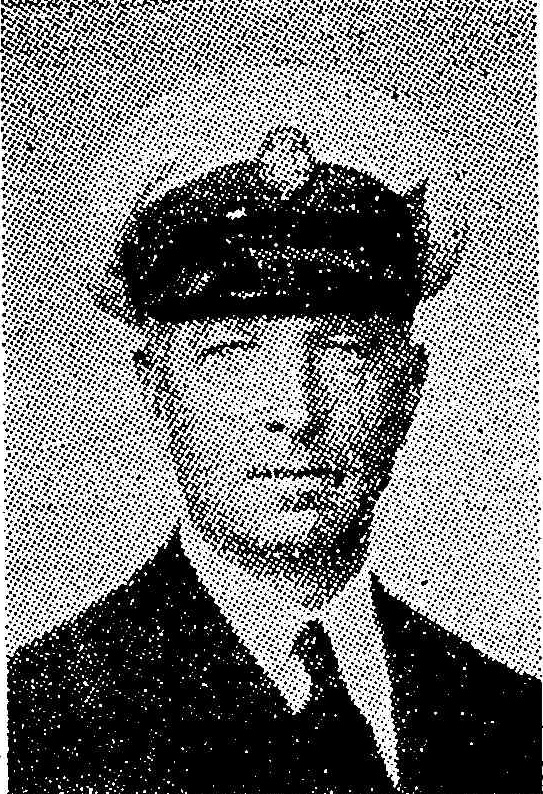
MR. TOM SOPWITH, the famous English yachtsman, whose new yacht Endeavour II, challenger for The America Cup, is described by Mr. H. Nossiter, as the most unique 'J' class craft in the world.
UNIQUE COLOR SCHEME
THE color scheme of Endeavour II is a royal blue hull, relieved with a gold streak running the entire length of the craft a few inches below the top of the stringer plates, a white boot-top and bronze under-water body: The only distinguishing feature in the colors of the two Endeavours will be their boot-tops. The new yacht's is white, and that of her sister a bright red. Many mechanical devices have been installed in the Endeavour II. as in her sister ship, including gauges for measuring the wind pressure and direction AH, ale consistent with the sportsmanship of yacht racing. The deck of the new yacht has an exceptionally clean appearance, and will make for increased efficiency In Hip general handling of the craft when racing. The sheet leads are now riveted to the stringer plates. Which certainly gives more room for the crew, whose job it will be to watch the various sheets.
'There is no denying the fact that England has a worthy challenger, and if everything goes well, I expect to see the America’s Cup won by England. I will never forget the launching of a great craft, and I have done my best to give 'Referee' readers an accurate description of a wonderful boat.' ENGLAND'S NEW AMERICA'S CUP CHALLENGER (1936, July 30). Referee (Sydney, NSW : 1886 - 1939), p. 18. Retrieved from http://nla.gov.au/nla.news-article135652252
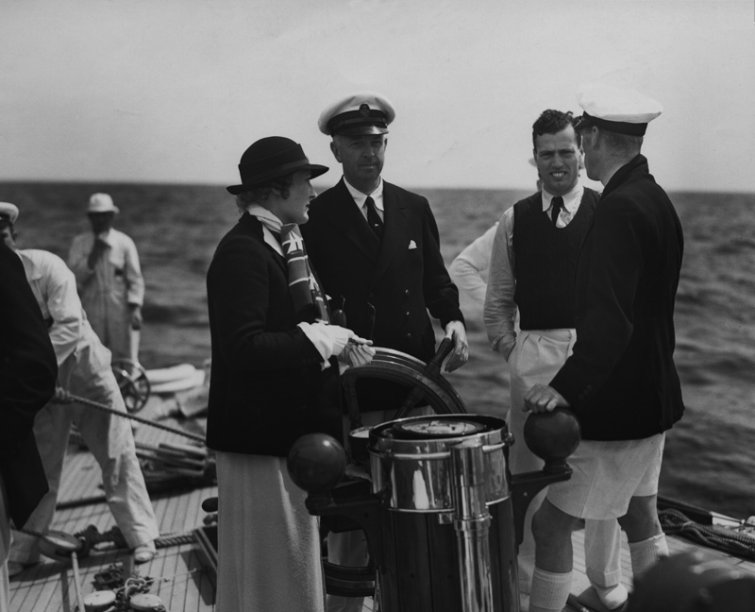
1937: Mr. Thomas Octave Murdoch Sopwith and Mrs. Phyllis Sopwith, owners of Endeavour II, aboard the yacht with Frank Murdoch. Murdoch helped to design the rigging and engineer the more technologically advanced competitor from the 1934 Sopwith America's Cup challenger Endeavour. Unfortunately for Mr. Sopwith, the 1937 challenger, Endeavour II, would not be successful in her battle for the Cup either. From the Edwin Levick Collection.
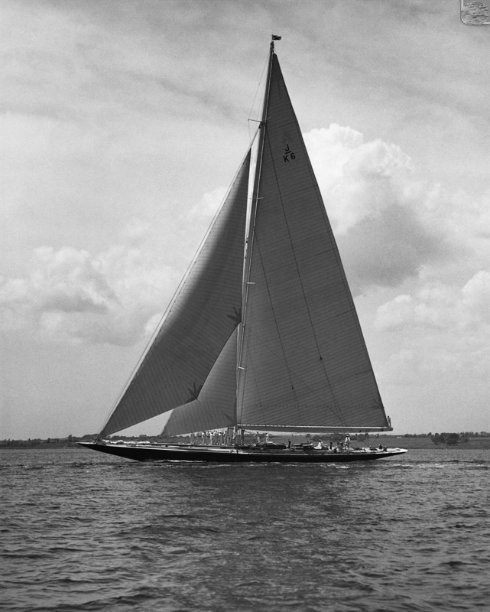
The Endeavour II is showing off her "Greta Garbo" headsail, a term used by American sailors to describe the quadrilateral shape. From the Edwin Levick Collection.
Harold Nossiter was very impressed with the magnificent yachts that he saw in the Solent and while they were moored there he visited London and even visited France. He fell in love with the English countryside and was most impressed with Stonehenge and Hastings where he paused on the spot where King Harold fell.
They left Southampton for Cowes on July 9th and moored near a black, dismantled yacht moored to a buoy. Nossiter thought she might be the "Britannia" so he rowed past her in the dinghy and found that she really was the late King's yacht. She still carried about her the remains of her former grandeur though dismasted and dismantled. He wrote in the log:-
" I happened to look out at eleven p.m. to see if the sky was clearing and saw two destroyers standing by, quite close to us. A launch then came alongside the "Britannia" and silently towed her to the stern of one of the destroyers, where she was made fast to the warship. The day had been windy and cold, with rain and a threatening sky but as the time drew near for the end of the famous yacht, the sky cleared, leaving black clouds only on the horizon, as though in mourning for the fine old boat. The destroyer stood out in majestic outline in the night, with the black hull of "Britannia" lying some lengths astern. At eleven fifteen p.m. the warship moved slowly ahead and like a departing spirit, the poor, dismasted yacht followed in her wake. So she, who had so well played her triumphant part, moved silently away to her last resting place. As the destroyer turned and moved faster ahead with her tow the clouds gradually passed away, leaving a bright, star-lit sky for the old yacht's end, which came a little later when she was sunk by a bomb, six miles out at sea.”
The next day, Sir Philip Hunloke, the late King's Sailing Master, came aboard and handed Nossiter an invitation from the Committee of the Royal Yacht Squadron to use the Club House during their stay at Cowes, which they greatly appreciated.
They stayed in England for three months which gave Nossiter the chance to document the voyage from Sydney to Southampton in his first book, "Northward Ho" which was published in London by H.F.& G.Witherby Ltd. in 1936 and in Boston by Charles E. Lauriat & Co. the following year.
Meanwhile they sailed in Mr. Isaacs Bell's yacht "Bloodhound" with her designer, Mr. Nicholson, joining in a race against four of the J Class yachts (also designed by Nicholson) and came second. Nossiter's two sons Harold and Dick sailed as crew in the "Bloodhound” in several more races, winning the Channel race, the Queen's Cup and other races at Torquay and Gosport.
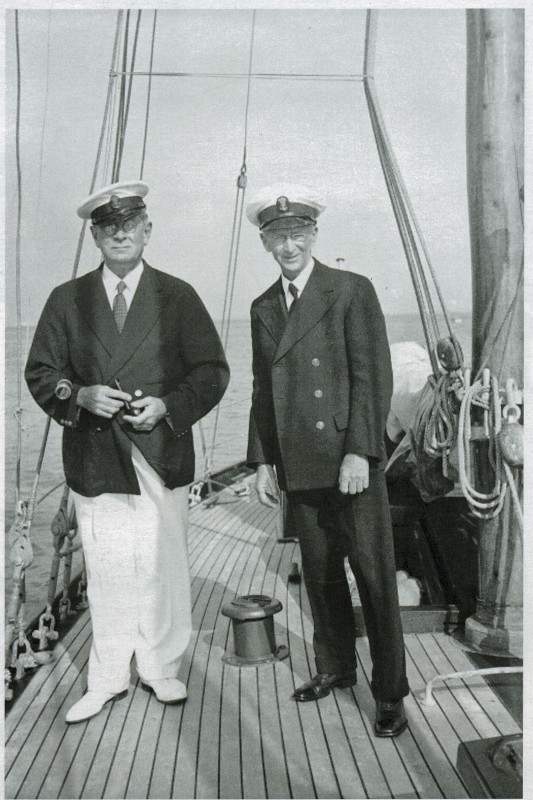
Harold Nossiter Snr. at Cowes - photo from Nossiter Family albums
MRS. H. NOSSITER had a long letter from her husband, Mr. Harold Nossiter, telling of their doings in England. He and his two sons, Dick and Harold, were made members of the Royal Yacht Squadron at Cowes, and have met many prominent people in the English yachting world. Mr. Nossiter has been entertained by Lord and Lady Churston, and sailed in Lord Churston's yacht in the Cowes regatta, which was, according to the Nossiters, a very wet affair, and rained all the time, and everyone wore oilskins whether they were on a boat or not. Dick and Harold were invited to stay in London as the guests of Sir Robert Chadwick, and in between parties and sight seeing have started to fit out the Sirius for the long Journey, as they have planned to leave England in September, and will return via the Panama Canal. Social SIDELIGHTS... (1936, August 23). The Sun (Sydney, NSW : 1910 - 1954), p. 4 (Women's Section). Retrieved from http://nla.gov.au/nla.news-article230310898
SIRIUS DID NOT ENTER
OCEAN RACE REPORT
Mrs. H. Nossiter, whose husband's yacht, Sirius, was reported during the week having won a 250-mile ocean race in English waters, said that the boat did not participate. Mr. Nossiter was invited to compete, but, true to his amateur principles, preferred to stand out, as money prizes were offered for the event. His sons, Harold and Richard, showed disappointment at this decision, and were invited subsequently to sail another yacht. This they did, and their winning of the race in a strange yacht — a creditable showing of seamanship — gave rise to the rumor regarding their own craft. Sirius is an auxiliary schooner with a canoe stern. She was designed by John D. Thistlethwaite, and built by J. Hayes and Sons. SIRIUS DID NOT ENTER (1936, September 12). The Daily Telegraph (Sydney, NSW : 1931 - 1954), p. 17. Retrieved from http://nla.gov.au/nla.news-article247202876
The Nossiters' departed Cowes on September 17th 1936 to return to Australia via Madeira and Trinidad.
Nossiter to Cross Atlantic
MR- HAROLD NOSSITER hopes to cross the Atlantic on the journey from England to New York next Saturday. Whilst in England, two Nossiter boys, Harold and Richard, sailed an English yacht in an ocean race over a 250 miles course. They were successful. Nossiter to Cross Atlantic (1936, September 17). Referee (Sydney, NSW : 1886 - 1939), p. 16. Retrieved from http://nla.gov.au/nla.news-article135652909
The Nossiters continued to Trinidad where the locals told them that the Island was outside the hurricane zone, despite the fact that one had struck there as recently as June 27th 1933. It caused extensive damage to the coconut plantations and the derricks of the oil fields, destroyed houses and sank vessels. The Trinidadians would not admit this was a hurricane as they pride themselves on being outside the hurricane belt.
They soon moved the yacht to Monos Island where the vampire bat is found and they visited the Pitch Lake which they walked across watching the Negroes digging out the pitch with picks while other labourers carried the lumps weighing up to eighty pounds on their heads, to trucks which hauled it up to the refinery.
THE SIRIUS.
Mr. E. A. Box, of Sydney, has received a letter from Mr. Harold Nossiter, a member of the Royal Sydney Yacht Squadron, who is making a cruise around the world in the yacht Sirius.
The letter was despatched from Port of Spain, in the West Indies, and it said that Mr. Nossiter intended leaving on November 23 for Colon. He hoped to navigate the Pacific and return to Sydney by May. Mr. Nossiter reported that he was in good health, and had made a successful Atlantic crossing. THE SIRIUS. (1937, February 19). The Sydney Morning Herald (NSW : 1842 - 1954), p. 12. Retrieved from http://nla.gov.au/nla.news-article17304870
On December 1st as they approached Panama they saw hundreds of floating trees and stumps. They had many narrow escapes from running into huge logs in the dark. Fortunately there was not a heavy sea and hard wind at the time as many of the larger logs would have stove them in. As it was they received a few glancing blows. Then through the Panama Canal where they were measured at a cost of $10 and paid their tolls of $15.75 including pilotage, making a total of $25.75.
In Colon the Sirius was hauled up on Wilson's slip at Foulkes River, for a final overhaul, before proceeding on the long run across the Pacific Ocean. Whilst being piloted back to Cristobal by Mr. Wilson, the owner of the dock, he steered too close to a point and they grounded. After several unsuccessful attempts to get off the mud, Harold signalled a passing banana boat for a tow. They were pulled clear but the antifouling along the keel was scraped off and marine growth quickly grew there.
They left Cristobal under power with a pilot and a friend and passed through the first lock. As the ropes were cast adrift, the pilot at the wheel ordered full speed ahead. The water swirling in the lock swung the yacht around and with the engine at full power they rammed into the wall. The bobstay, of 1 3/4-inch wire rope, snapped and the Sirius hung on the wall of the dock by her bowsprit, made of Australian spotted gum. The rushing waters then picked up the yacht and deposited her back in the lock, without breaking the fitting to the stem or the gamin iron. The Port Captain, Captain Rodgers kindly offered to straighten some rigging screws and replace the bobstay, so they were soon ready to sail. They entered the Pacific Ocean and reached Cocos Island on New Year's Day 1937, anchoring in Chatham Bay.
Five days later they hoisted sail and made for Santa Cruz (Indefatigable Island), one of the Galapagos Islands, some four hundred miles distant. The whole way the wind and current were against them so they had a long beat to windward.
Nossiter chronicled the return to Sydney in his second book "Southward Ho" which contains many stories and legends of the sea. One example; -
"I remember a few years ago a story told to me by the brother of a man who was going home late one night from Sydney to Pyrmont and who saw the captain of one of his father's schooners called the "Meg Merriles" get into a rowing boat and row across to Pyrmont. He was rowing across himself and called out to the captain but receiving no reply, followed him in his skiff. He saw the captain land and although he ran after him along the road, he could not catch him and finally he saw him disappear into his cottage.
Next morning at breakfast he mentioned the incident to his father, who was surprised, as he believed that the vessel was up the north coast. He went down to the captain's residence later but his wife said he had not returned and the son was chafed by the family, who said he must have been drinking. The following day the "Meg Merriles" came into port with the flag at half mast. The mate reported the skipper was lost overboard, off Port Stephens, on the same night and at the same time as the captain was seen by my friend's brother going into his home."
In the Galapagos Islands an ex-German named Kubler took care of them and showed them around. He took Harold and Dick hunting wild pig and showed them how to catch lobster by simply feeling for them under the rocks and pulling them out one by one. He also took them to catch a giant tortoise, called a Galapagos by the Islanders. Kubler killed one weighing about five hundred-weight ( 254 Kg.), which he said was upwards of five hundred years old. The Indians at that time were killing them in large numbers and Harold wrote in the log that these creatures would soon be extinct. They dined on the liver of the one they killed for several days.
Galapagos (by Tim Nossiter)
Galapagos was dad's favourite and most interesting port of call during the circumnavigation, in fact it was for all the crew. They spent ten days anchored in Academy Bay on the main Island of Santa Cruz. The Galapagos Archipelago was barely settled when they sailed in, the total population on Santa Cruz Island was then about 24 whereas today it has an estimated population of about 12,000. All their time on Santa Cruz was spent with the Kubler family who had settled there from Germany about eighteen months beforehand.
During the day they went exploring, hunting and fishing, and in the evenings dining together, playing music and dancing. At the time the Kubler’s had a nine year old daughter Carmen and a photo of her standing in the water holding onto the tail of an iguana is featured on page 65 in Harold Nossiter's book Southward Ho.
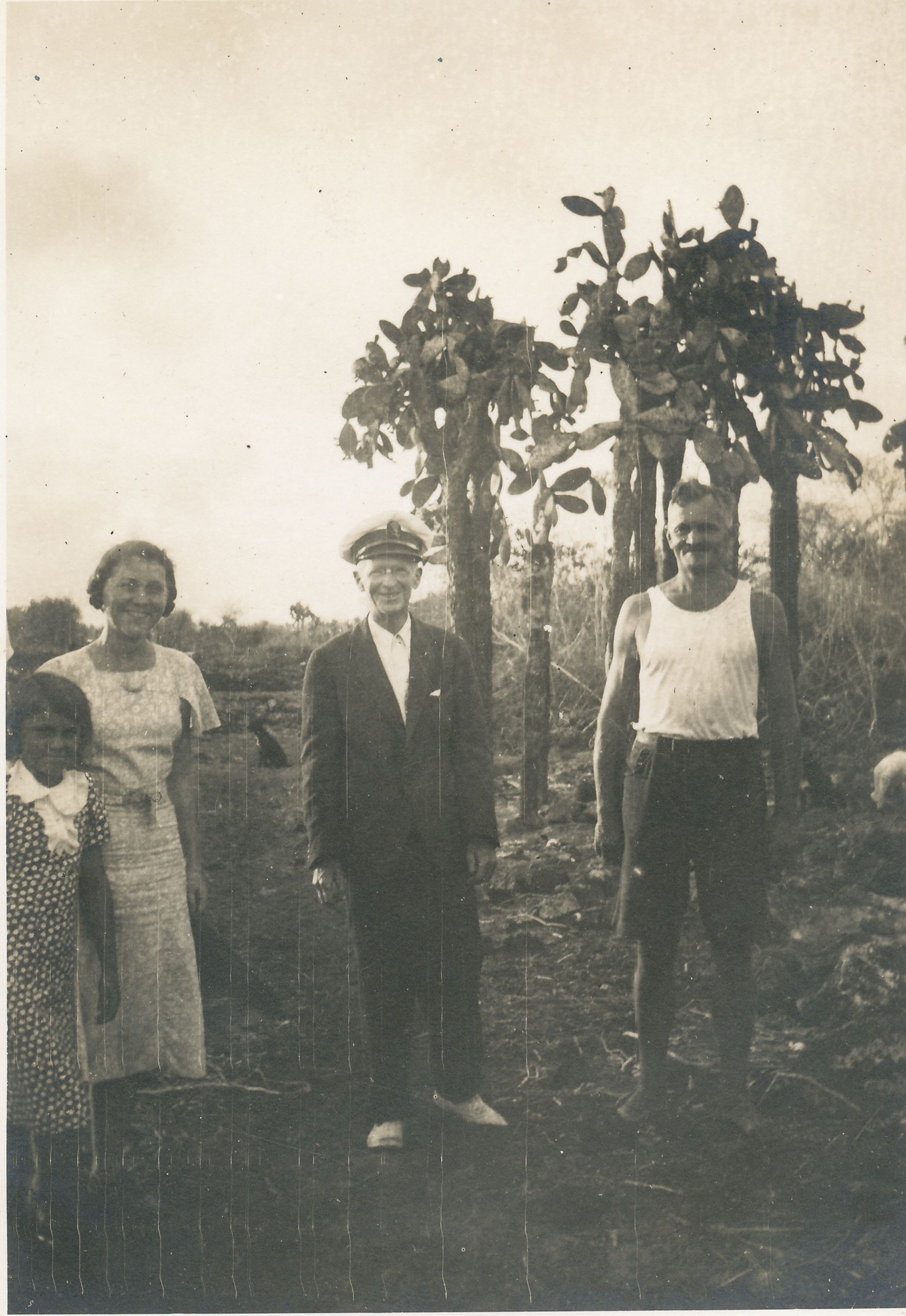
The Kubler family with Harold Nossiter
There was one more stop before leaving the Galapagos Islands, at Islabela (Albemarle Island) where they caught several turtles for fresh meat and fat which was boiled to make oil for cooking.
Then came the longest leg of the journey, three thousand miles to the Marquesas Islands. All the way from the coast of America to Australia they never saw another vessel under way. The log was over reading compared to Dick's noon day observations so Harold hauled it in and found that two of the blades were bent. There were bite marks on the blades and as this was the third time the log had been attacked by fish, he decided to dispense with the log as they only had one spare.
When they were fifteen hundred miles from the nearest land they saw a large number of whales. Harold then recalled a visit to Twofold Bay, on the New South Wales coast, a few years earlier. He visited the remains of Boyd Town, built by an adventurer named Boyd who came from England to Australia in a yacht called the "Wanderer" in 1842, to develop the pastoral and whaling industry.
It was the porpoise that kept them company on the lonely tracts of ocean and made them feel less cut off from the rest of the world. Leaping in front of them and crossing the bow, having no fear of the hull moving through the water and missing them with only inches to spare.
The flying fish was another friend. Each morning a few would be found on deck and they tasted good when fried in turtle oil. The record number collected was one morning when approaching the Celebes the crew gathered about seventy. Exhausted birds often came aboard and rested on the yacht. They were usually quite tame and let the crew pick them up. One poor bird stayed with them for quite a time and Harold was sorry to find it dead on the floor of the saloon one morning, where it had fallen from its perch during the night.
After nineteen days at sea they reached Fatu Hiva (Magdaline Island), the most southerly island of the Marquesas Archipelago.
One luxury item the Nossiters carried aboard was a wind up gramophone and some 78 rpm records. They would often play some music for the natives, the first western music they had ever heard. Here in Fatu Hive one of the younger men started to do the "Hula Hula" when they gave him a little music. In return they were given breadfruit and paw paws, then one after another, visitors came with presents of oranges, tomatoes, watercress, pineapples and every fruit and vegetable they grew. Harold gave them tobacco and cigarettes but they really did not want anything in return.
In Fatu Hiva the natives were a happy, smiling race but after a day there, Harold noticed that many were diseased, especially the men, with nasty sores, elephantiasis and leprosy. The crew had shaken hands with all on the beach, the night before and never knew how many were afflicted. Later they were told by a Government official at Atouna that this island was closed and they should not have gone there.
After this "Garden of Eden" they had a pleasant sail, close-hauled, to Hiva Oa (Dominica Island), then to Tahu Ata (Saint Christina Island) for a few days before returning to Hiva Oa. When they weighed anchor there on February 21st they carried the mail for the island of Nuku Hiva (Marchand Island) where they arrived after an uneventful voyage.
The route across the Pacific took them to the Atoll of Takaroa in the Tuamotu Archipelago where they picked up the next load of mail and headed to Tahiti, then Bora Bora in the Society Islands. Then to Raratonga, Cook Islands and Nuku'alofa, Tongan Islands.
The last part of the journey was the toughest. As they sailed down the East Coast of Australia, they encountered a severe storm with force twelve winds from the south. They had to lay hove to with enormous waves breaking ahead and aft of them but none came crashing onto the decks.
"MORE SEAS TO CONQUER."
Mr. Nossiter's Plans.
ROUND AUSTRALIA TRIP.
With 30,000 miles of travel behind him, Mr. Harold Nossiter, of Northwood, who brought his yacht Sirius to its moorings below his home yesterday, after a world cruise, is already thinking of new seas to conquer.
"I hope to circumnavigate Australia, but probably not in the old Sirius," he said. "I shall probably sell her and buy a smaller ship, one which can be handled by a couple of men."
Yesterday afternoon Mr. Nossiter had not had time even to shave or change his sea-going clothes. By 4 p.m. 100 friends and relations had called, 39 telegrams had arrived, and the 'phone had been answered 67 times. "I did not know I had so many relations," said Mr. Nossiter.
The first move made by Harold and Richard Nossiter, who sailed on the Sirius, was to take a taxi to the city and have a haircut. Their youngest brother described them as "looking like Rasputin."
DANGEROUS LIVING.
"The trip taught me," said Mr. Nossiter, "that to live dangerously Is always interest-ing. You can't travel round the world with-out striking danger, but only once were we thoroughly scared.
"We had marvellous luck the whole time, but as we approached Australia my one thought was to get home as quickly as possible. I am not a superstitious man, but a strange feeling came over me that fate had been too kind. When we were 800 miles from Sydney a gigantic waterspout formed and rushed toward us, and we knew there was grave danger of being wrecked.
"It was about 500 feet high, a great black tunnel Joining sea and clouds. We were direct in its path. I thought it might break if I fired a shot through it, and I had Just gone below to get a rifle when it collapsed. It was only 200 yards from the ship."
Mr. Nossiter and his sons saw many strange sights, and met many unusual people during the voyage. At Bora Bora, near Tahiti, they talked with.' Alain Gerbault, the French yachtsmen who sailed a craft single-handed round the world some years ago. Gerbault has become champion of the natives against the French regulation prohibiting the wearing of native costume. "MORE SEAS TO CONQUER." (1937, May 22). The Sydney Morning Herald (NSW : 1842 - 1954), p. 14. Retrieved from http://nla.gov.au/nla.news-article17370445
After three days the current had actually taken them 10 miles further south, towards Sydney. They dropped anchor in Watson’s Bay at 7 p.m. on May 20th 1937 and Sirius earned her place in maritime history as the first Australian Yacht to circumnavigate the globe and the three Nossiter men as the first Australians to circumnavigate the globe.
The second Australian crew and Australian yacht to circumnavigate was Jack Earl's Kathleen Gillett, a double ended ketch, and crew - they left in June 1947 and made it back in December 1948.
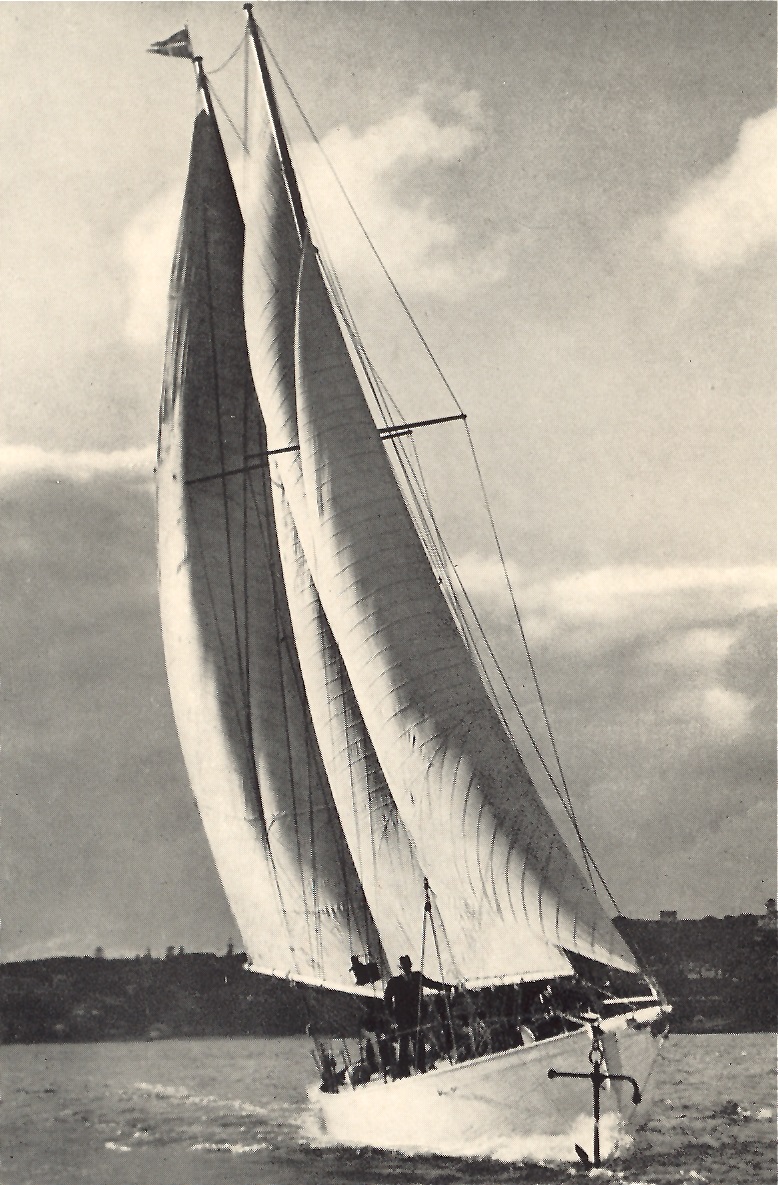
Sailing Home - 1937
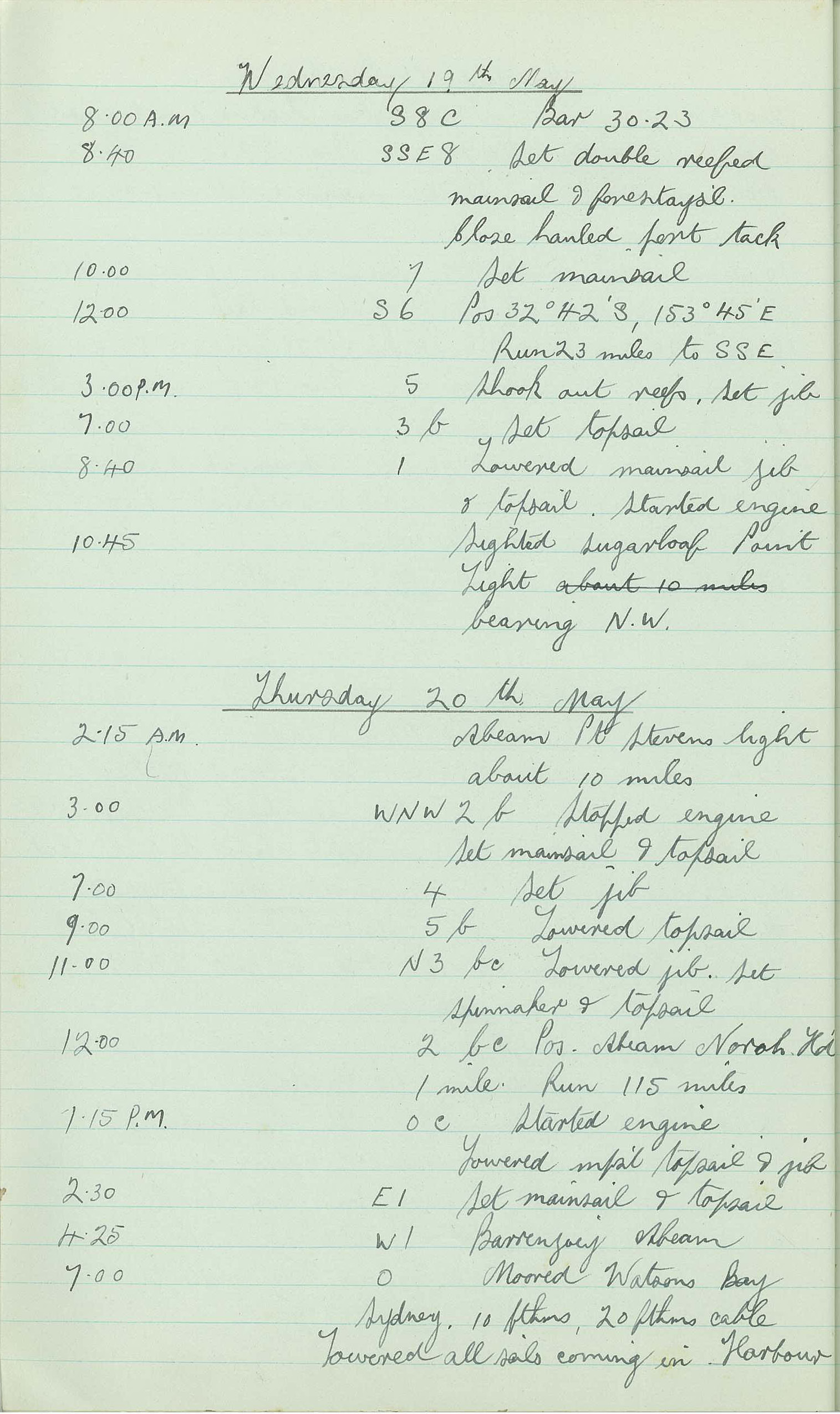
Notes from the Sirius Log - May 19th and 20th, 1937
YACHT SIRIUS RETURNS.
Romantic Voyage Ends.
GALE IN SIGHT OF HOME.
The yacht Sirius, which left Sydney on July 14, 1935, returned early last night, having completed a voyage of 30,000 miles round the world. The crew, comprising the owner, Mr. Harold Nossiter, and his sons, Messrs. R. W. and H. C. Nossiter, were unable to leave the yacht because of quarantine and Customs regulations. Quarantine regulations also prevented anyone from boarding the Sirius, but Mr. Nossiter was interviewed across several feet of water from a launch soon after he dropped anchor in Watson's Bay.
THE LAST STAGE.
The last stage of the world voyage was from Tonga to Sydney, a distance of 2200 miles, which took 25 days. The New South Wales coastline was sighted near Grafton 20 days out, but a south-west gale sprang up suddenly. It lasted for three days, during which the Sirius was hove-to.
Mr. Nossiter said that it was undoubtedly the worst blow encountered on the whole voyage, and it was annoying to meet it within sight of home. The yacht's sails were torn to ribbons, and the crew had to ride the gale out under bare poles. He estimated that they were blown 70 miles out to sea. Before they could resume, the sails had to be repaired or replaced by spares.
Between Panama and Sydney, the Sirius did not sight a single vessel, and at times, Mr. Nossiter said, the feeling of loneliness was Indescribable.
SUMMARY OF THE VOYAGE.
The Sirius made the first stage of the voyage to England via the Suez Canal. It encountered a severe gale In the Gulf of Lyons. The Atlantic crossing was achieved by way of Madeira and Trinidad to Panama, On the voyage from Panama to Sydney, the yacht called at Cocos Island, Galapagos Island, the Marquesas, Papeete, Tahiti, the Tumutu Archipelago, Bora Bora, Rarotonga, and Tonga.
Mr. Nossiter said that wherever the Sirius went it was admired by yachtsmen, especially in England. Its design, rig, and construction, they said, did great credit to Australia. Others were amazed at the amount of sail carried on a craft managed by only three hands. The beauty of the Australian timbers used in the Interior was also praised. YACHT SIRIUS RETURNS. (1937, May 21). The Sydney Morning Herald (NSW : 1842 - 1954), p. 11. Retrieved from http://nla.gov.au/nla.news-article17369977
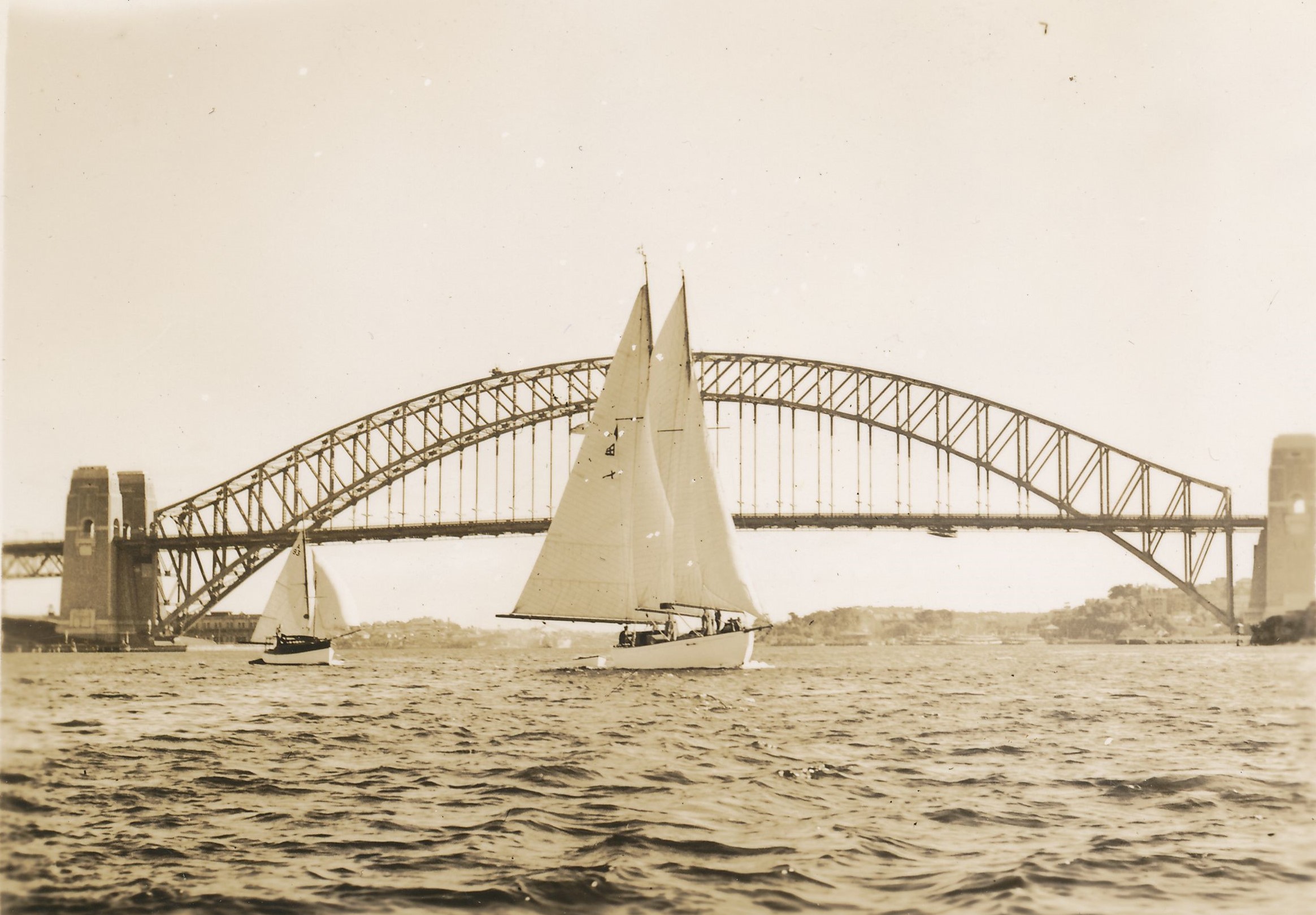
The Sirius arrives home
Coming home would have been doubly frustrating when unable to leave the yacht or have family aboard, as shown in the quarantine referred to above. No wonder his wife hugs her husband and her sons once she can:
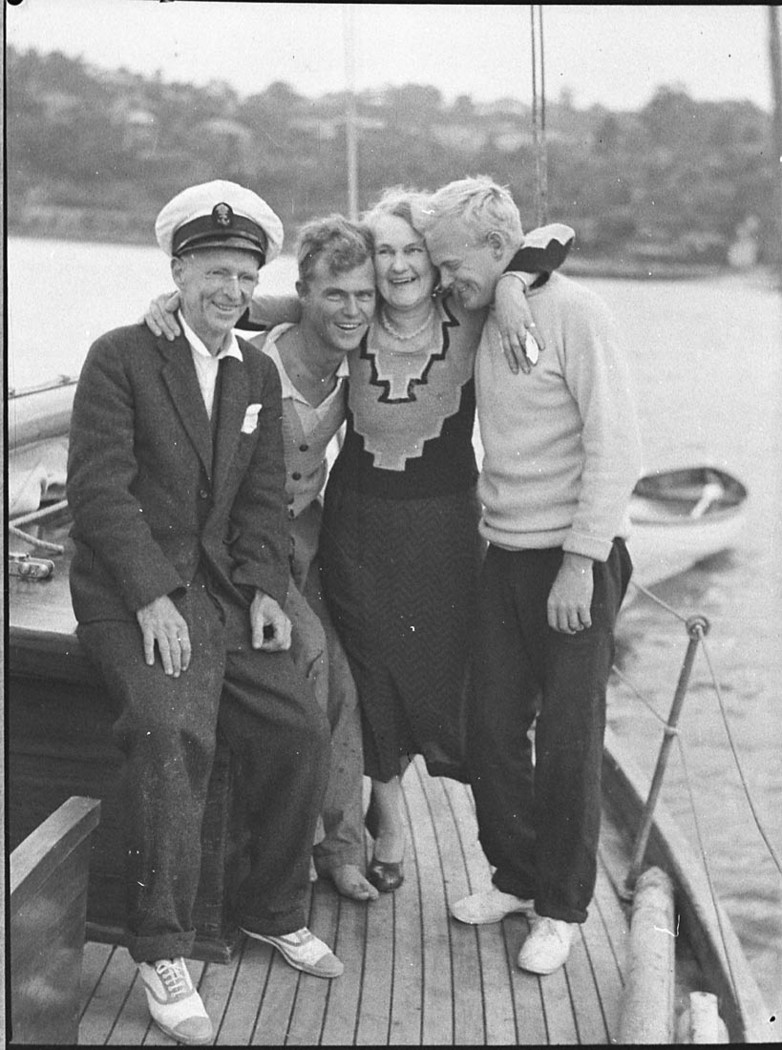
Return of Nossiter's yacht by Sirius from world cruise 1937. Image No.: hood_14965h, courtesy State Library of NSW
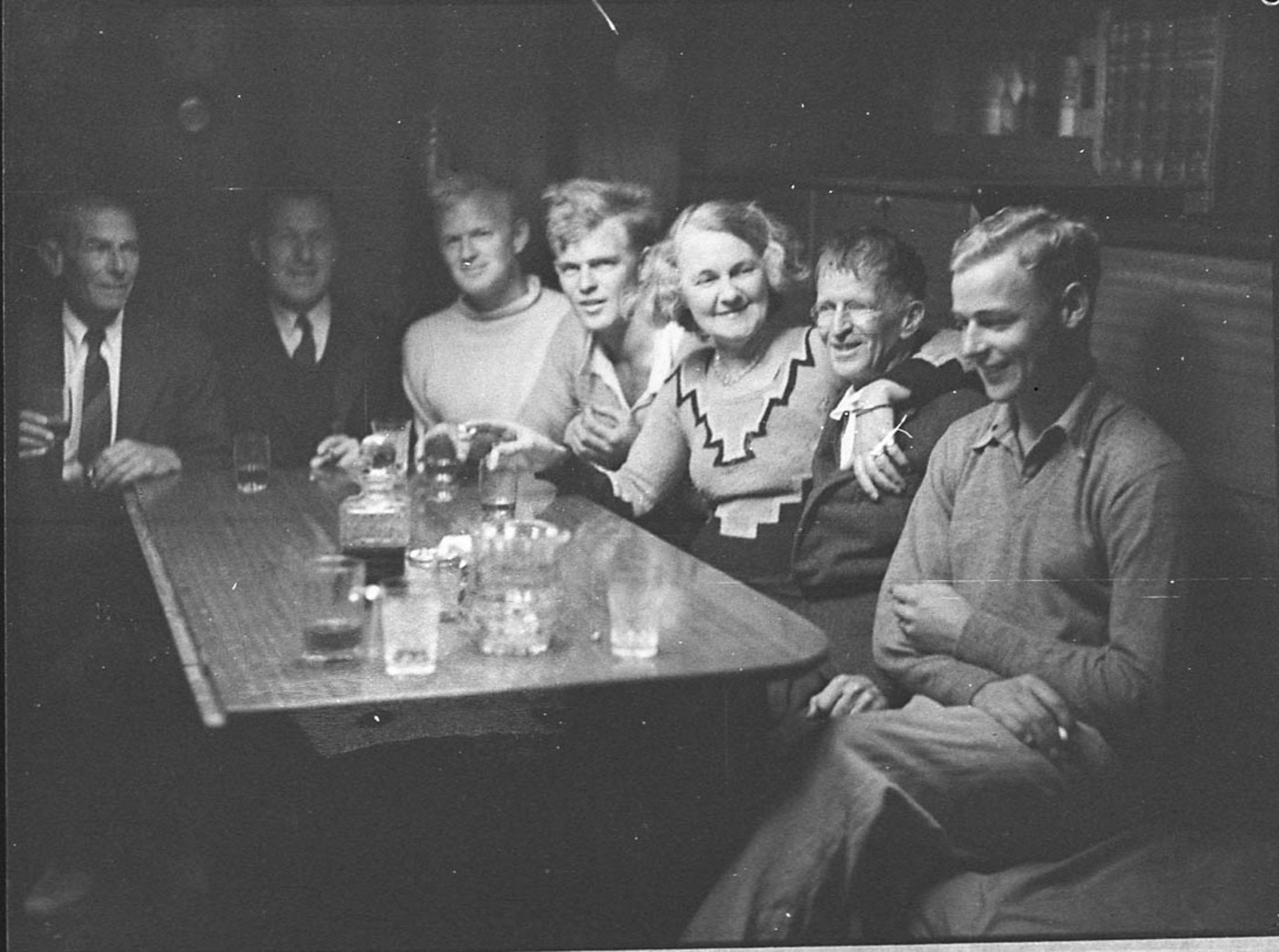
Return of Nossiter's yacht by Sirius from world cruise 1937. Image No.: hood_14964h, courtesy State Library of NSW

Once home Harold Nossiter Snr. gave a series of talks on his return while his books, duly published, were cited as a valuable resource for others venturing to seas along the courses they had taken. His efforts to share information in his own candid no-nonsense way was similar to that work done by Walter Marks on his return from England after the cancelled due to WWI Americas Cup event of that year - Mr. Marks had also been a RPAYC member, which has as its base, still, to share the passion for and promote the sport of sailing.
The yacht clubs he was a member of provided welcomes - including the Royal Prince Alfred Yacht Club. The burgee from Sirius is still proudly displayed in the Clubhouse.
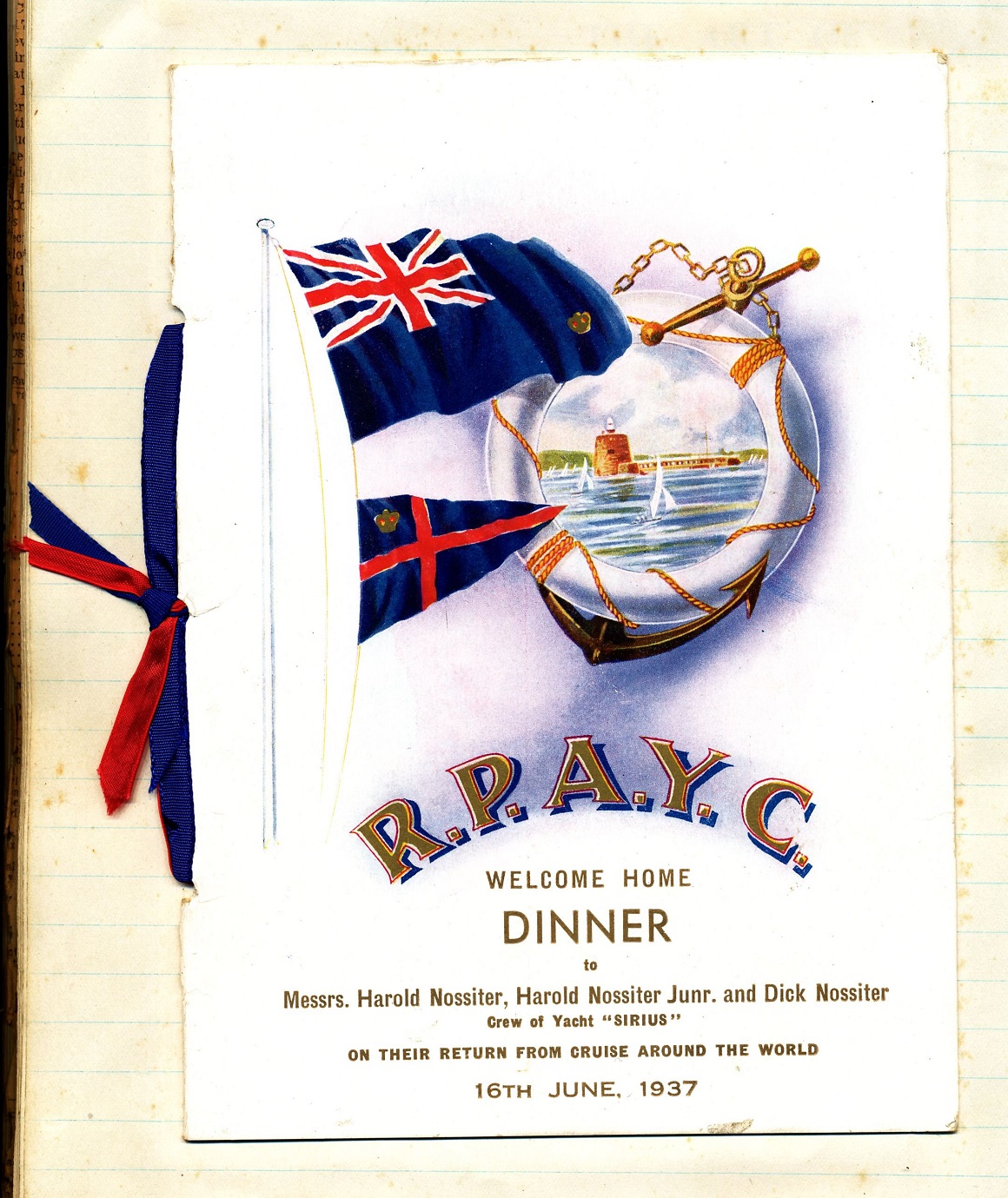
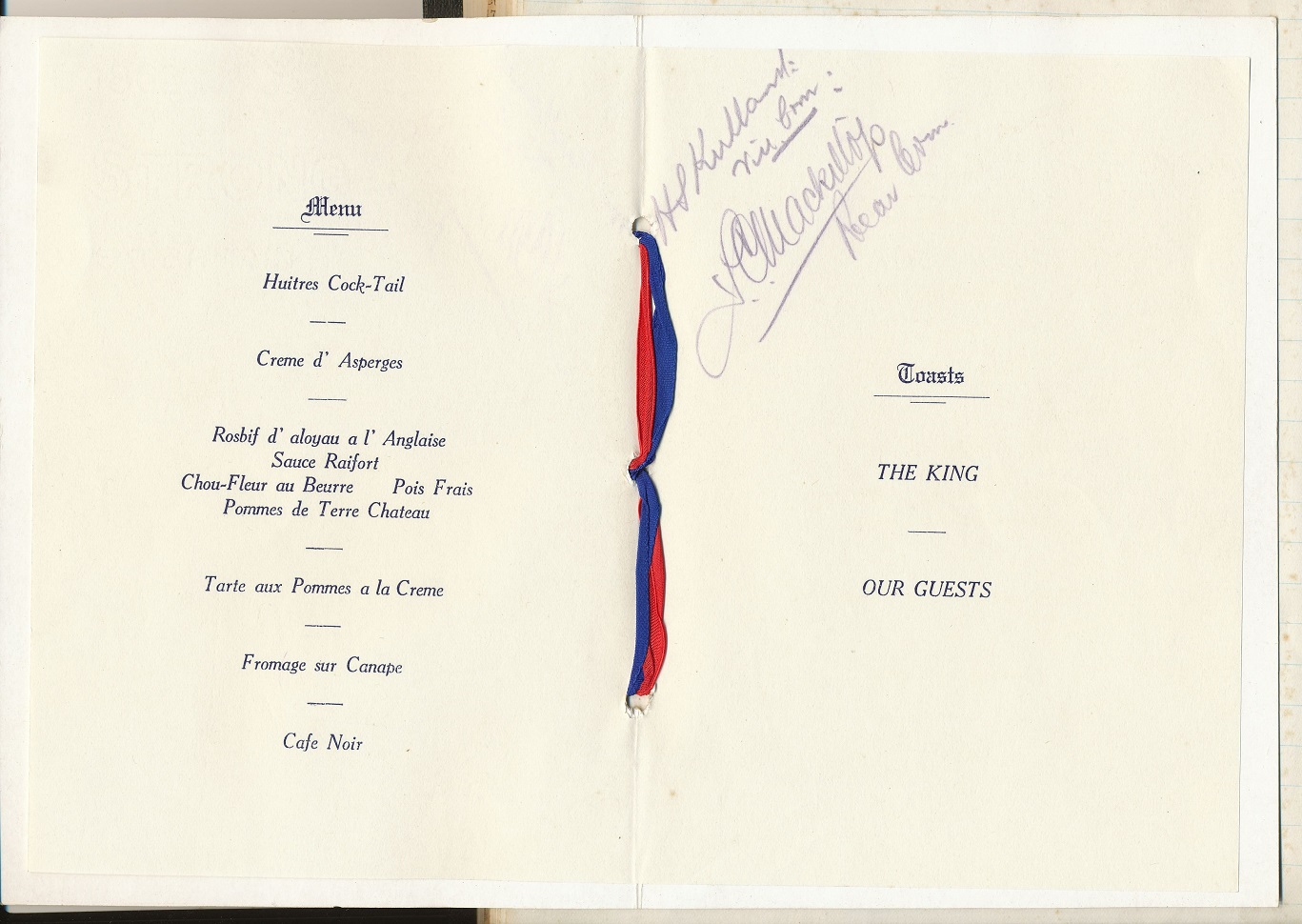
ADVENTUROUS YACHTING.
Mr. Harold Nossiter, a well-known Sydney yachtsman, performed a magnificent feat of navigation and courage when he sailed his 53ft schooner all the way from Sydney to London and has written a book on his experiences of such lengthy ocean cruising. The book is of excitement lo the specialised yachtsman and lay romantic alike, for the accomplishment was so considerable. For the large part of the trip the vessel, Sirius, was sailed by three men only-Mr. Nossiter and his two sons. The number of miles sailed reached the astounding total of 13,723, and of these only 380 were done under power. The route followed was, roughly, Sydney, Rabaul, Buton, Batavia, Singapore, Penang, Colombo, Aden, Port Said, Crete, Athens, Malta, Gibraltar, and Plymouth, but these intrusions of the land meant little to Mr. Nossiter. It was the sea always that provided him with his mile posts to achievement-the currents, the moods, and tempers of the sea.
Consequently the description of his voyage is made up largely of weather reports and sailing directions. Strangely enough this does not pall on the layman-probably because Mr. Nossiter does it all so simply. In addition, there is a most valuable appendix on ocean cruising containing all the details necessary for a trip half-way round the world in a small yacht. At the conclusion Mr. Nossiter says that he Is preparing for his return to Australia by which he will completely circumnavigate the globe. It is to be hoped that he will give us another book on this voyage, ("Northward Ho" by Harold Nossiter; H. F, and G. Witherby; Dymock's.) ADVENTUROUS YACHTING. (1937, April 3). The Sydney Morning Herald (NSW : 1842 - 1954), p. 12. Retrieved from http://nla.gov.au/nla.news-article17356816
THE VOYAGE OF THE SIRIUS
"Northward Ho," by Harold Nossiter. Published by H. F. and G. Witherby Ltd., London.
ON July 14, 1935, Harold Nossiter, a prominent Sydney yachtsman, with a crew of three, which included his two sons, left Australia in a 35-ton staysail schooner on a trip to England and back. The Sirius was specially built in Sydney for the 28,000 miles voyage and she is a modern yacht in every detail. England was reached in June 2, 1936, after a comparatively uneventful voyage and the Sirius returned to Sydney a week or so ago. While in England Mr. Nossiter set down an account of the forward voyage which now appears under the title "Northward Ho." It is a plain unvarnished story of the trip and has no particular literary merit, for Mr. Nossiter himself admits that he is no literary man, "least of all a stylist."
The book, perhaps, will be most appreciated by yachtsmen, for apart from Mr, Nossiter's thumbnail' descriptions of places on and off the beaten tracks of sea voyagers his narrative tells largely of winds and seas and sails. There is a long addendum to the book in which the author gives detailed notes on ocean cruising, and because of his experiences in this direction, experiences snared by but a few, Mr. Nossiter should find an appreciative audience among readers who are interested in the practical work of sailing ships, and of meeting the many situations which tides and winds and seas create whether in bay or ocean cruising.
Ports of Call
MR. NOSSITER has something Interesting to say of the Various ports of call; of Rabaul where he found the white population rather pale and an absence of the tanned complexion: of Komodo, the home of dragon lizards, but where none were found although a good search for them was made; of charming Ball with a people as yet unspoiled by tourists; of the quaint looking open vessels with painted hulls which were seen by the hundreds In the Java Sea; of Batavia with Its imposing buildings and hotels and where the Dutch authorities have done excellent work in keeping down diseases among the native population.
But for the fact that the engine (which was seldom used) responded quickly at a critical time the voyage might have ended on the voyage to Singapore at a spot called Middle Rocks. The yacht, caught in the current, was only a length off the rocks when the engine was started up. After Singapore the Sirius was tossed about in confused and broken seas whilst negotiating the difficult Malacca Strait, and It took eleven days to do the 400 miles, from Singapore to Penang.
A call was made at Pulo Langkawa and then the yacht sailed to Colombo through the Bay of Bengal. across the Arabian Sea to Aden, and on to Suez, whence the crow made excursions to Cairo and the Pyramids. Mr. Nossiter found that although the Pyramids and Sphinx were picturesque they were rather disappointing, as he expected to see something much larger and grander. They were not as interesting to him as the relics from Tutankhamen's tomb seen in the Cairo Museum.
An Italian pilot took the Sirius through portion of the Suez Canal. He was a pilot who talked politics. "This man," says Mr. Nossiter. "was of a very definite opinion that his country had got .nothing out of the war whilst other countries had obtained colonies, and that Italy had great need for expansion as she was over-populated." The pilot also Informed Mr. Nossiter that there were 2,500,000 Italians in Australia. "But when I pointed out that the population of Australia was only 6,500,000 all told, of which 97 per cent were of British stock," says Mr. Nossiter, "he did not appear to believe me, and declared that the schools taught otherwise. The Italian pilot also went on to say that the British colonies had had enough of the last war and would not help Great Britain were she embroiled in another, and furthermore that she would not succeed without the help of the colonies."
Worse for Small Craft
THE crew of the Sirius found the Mediterranean seas quite unlike those of the open ocean. They were short and steep and seemed to come from different directions making It worse for a small craft than did the long rollers of the ocean. The Sirius put Into Spinalonga Bay In Crete, an Imperial Airways base. Here old customs and traditions obtain. "Girls are strictly brought up and never allowed to mix with the opposite sex unless accompanied by their parents or brothers. Fathers have to supply the daughter, when she marries, with a dowry according to their wealth. A family of girls Is a great hardship as a poor man has to start saving for his daughter's dowry from the time of her birth, and many men receive their start in life with 'the dowry they get with their bride."
After calling at Candia, where the tourists found much to interest them In the ruins of the Palace of King Minos at Knossos, the Sirius sailed to Athens which, they found, was rather spoilt by the poor buildings and narrow dirty streets on the outskirts of the city. The Corinth Canal, through which the Sirius passed, was an imposing sight and much beautiful scenery was seen In the Gulf of Corinth. Argoatoll, the capital of the island of Cephalonia, Malta, and Gibraltar, were other ports of call before the Sirius passed Into the Atlantic Ocean and Into the Bay of Biscay, where the sea was like glass. On June 2 the Sirius reached Plymouth — Journey's end.
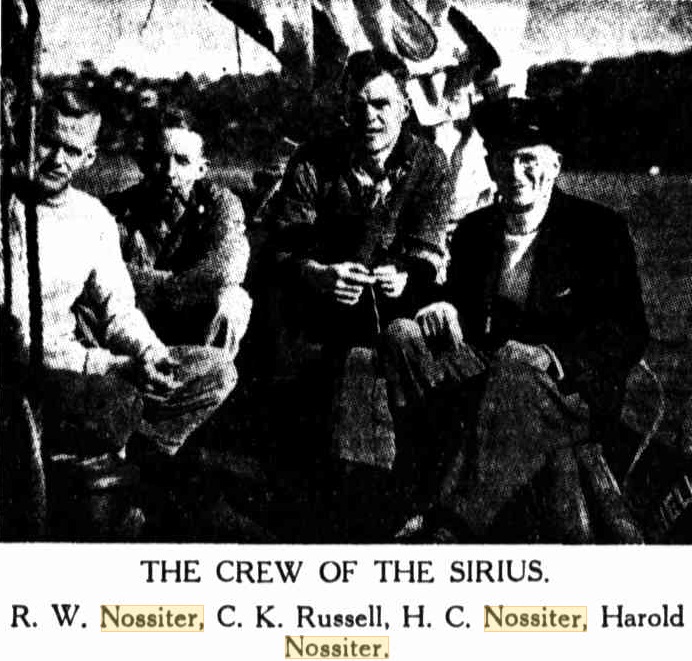
VARIOUS BOOKS (1937, June 12). The Telegraph (Brisbane, Qld. : 1872 - 1947), p. 14 (LATE WEEK END FINAL). Retrieved from http://nla.gov.au/nla.news-article191721565
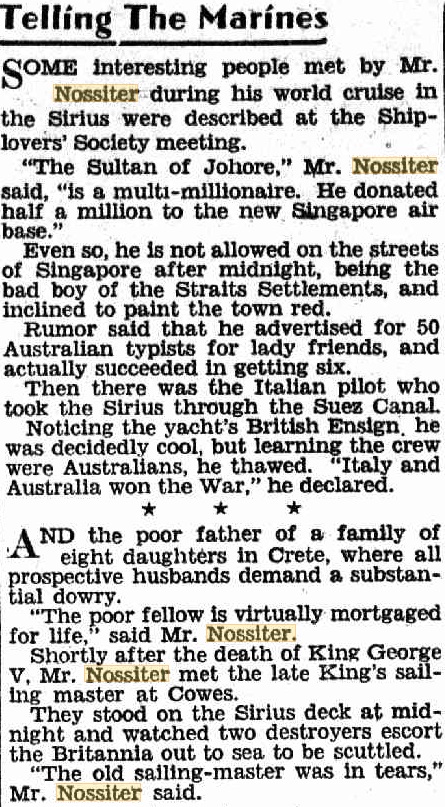
The Two Million (1937, August 20). The Daily Telegraph (Sydney, NSW : 1931 - 1954), p. 6. Retrieved from http://nla.gov.au/nla.news-article247226854
Mr. Harold Nossiter, who recently sailed round the world with his two sons in a Sydney-built yawl, the Sirius, will give a lecture tomorrow, at 8 p.m., to the Geographical Society of New South Wales, at the rooms of the Royal Empire Society, Bligh Street. No Official Advice (1937, September 14). The Daily Telegraph (Sydney, NSW : 1931 - 1954), p. 7. Retrieved from http://nla.gov.au/nla.news-article247232865
Sailing Home In The Yacht Sirius
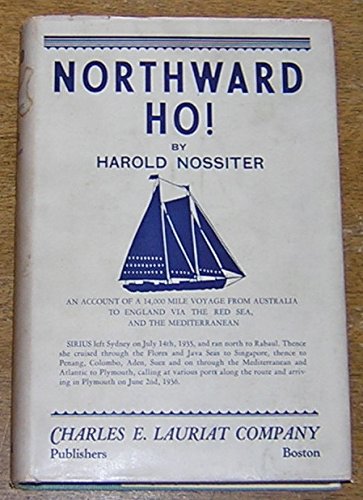 FROM September 17, 1936, to May 21, 1937, Mr. Harold Nossiter of Sydney, with his two sons, Harold and Dick, was occupied in sailing his yacht, Sirius back from England to Australia, via the Panama Canal and the Pacific Islands, a voyage of 14,422 miles.
FROM September 17, 1936, to May 21, 1937, Mr. Harold Nossiter of Sydney, with his two sons, Harold and Dick, was occupied in sailing his yacht, Sirius back from England to Australia, via the Panama Canal and the Pacific Islands, a voyage of 14,422 miles.
In his book "Northwood Ho," Mr. Nossiter had already narrated the voyage of the Sirius from Australia to England; and the new book "Southward Ho," tells the story of the return journey.
There were no serious mishaps during the long adventure, there were many exciting days.
SUCH a voyage is by no means a long picnic, though the Nossiters enjoyed many picnic interludes in places where they landed — notably among the islands away from normal shipping routes. When Mr. Nossiter gives a day's diary you see how the yacht's crew was kept on the job pretty well all the time. The night hours, twelve hours from 7 to 7, are divided into six watches of two hours each. Each of the three has a two-hour watch at n time, so that each of them has twice within the twelve hours a four-hour spell for sleep.
IN the daytime, unless the weather is foul, there is no need for special allotment of watches, but there is enough for all those to do.
Harold is the head cook, and does very well with a variety of ingredients, filling up his larder with unusual grub obtained in out-of-the-way places. At first, you find Harold peeling spuds for a potato pie, making damper, and creating an olio which is "a cross between a hash and an ordinary soup, with meat and vegetables floating round." There is mention of plum-pudding, but, whether mixed in good housewife fashion or dumped from a tin, we are not told.
LATER on (after leaving the Galapagos Islands, for instance), Harold has menus which would not be served in Artarmon or Strathfield. Breakfast — oatmeal porridge; bananas fried in turtle oil; yacht-made bread.
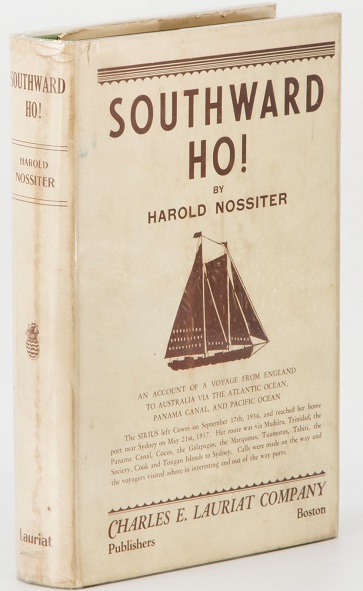 THE Nossiters found the Galapagos Islands, off the coast of Ecuador, a storehouse of new provisions. Their hosts were the Kuebler family, man, wife, and daughter Carmen, aged nine. "Kuebler and my sons returned at night, having shot three swine with revolvers. The pork was excellent. "Kuebler took us lobster-fishing the next day. We went to some rocks which were along the shore, and, stooping over them, Kuebler felt underneath, and brought out lobster after lobster until we had about twenty." These were boiled and put in brine for the yacht's larder. "Truly a land of plenty," says Mr. Nossiter. "No need to work. ' Bananas, pawpaws, anything will grow that is stuck in- the soil; turtles, turtle-eggs, pigs in plenty, a climate that is quite cool for the tropics; no taxes, and, as far as I can gather, practically no duty. Residents fence in the land they want with stones and just/live a life of ease, growing enough cotton and coffee to sell."
THE Nossiters found the Galapagos Islands, off the coast of Ecuador, a storehouse of new provisions. Their hosts were the Kuebler family, man, wife, and daughter Carmen, aged nine. "Kuebler and my sons returned at night, having shot three swine with revolvers. The pork was excellent. "Kuebler took us lobster-fishing the next day. We went to some rocks which were along the shore, and, stooping over them, Kuebler felt underneath, and brought out lobster after lobster until we had about twenty." These were boiled and put in brine for the yacht's larder. "Truly a land of plenty," says Mr. Nossiter. "No need to work. ' Bananas, pawpaws, anything will grow that is stuck in- the soil; turtles, turtle-eggs, pigs in plenty, a climate that is quite cool for the tropics; no taxes, and, as far as I can gather, practically no duty. Residents fence in the land they want with stones and just/live a life of ease, growing enough cotton and coffee to sell."
Earlier in the voyage, and before going through the Panama Canal, the party took a pleasant spell in Trinidad, and at the neighboring Monos Island, where they chummed with Dr. Tothill, commodore of the San Fernando Yacht Club. They found something of interest to Sydney swimmers: "No one worries about sharks here. We would swim from the yacht to the doctor's home, and he and his friends would swim out to us. People in Trinidad, however, are very much afraid of the barracouta, which sometimes attack in schools."
THERE is a vicious species of barracouta in Australian waters also. The longest spell for the Sirius on the Pacific Ocean was from the Galapagos to the Marquesas Islands, a 3000-mile stretch. They set out with a fine supply of vegetable food — bananas, pumpkins and. yams. Mr. Kuebler, in the Galapagos stay, gave them a bunch of 200 bananas — a pleasant gift, but not costly, for such a bunch on the Santa Cruz plantation is worth twopence Australian.
THE long stretch of ocean was covered in less than three weeks, January 25 to February 13. The day's runs of the, Sirius show a consecutive series of good figures. Take the first week in February, with the daily mileages 173, 160, 185, 185, 180, 155, 143.
The Marquesans have a past more exciting than their present. "I was interested here," Mr. Nossiter says, "in the sacrificial stones seen in a valley where the Marquesans slew their victims of war, afterwards devouring them. There were seats around the sacrificial altar where the chiefs viewed the slaughter, and other seats of stone for those of lesser degree. The chiefs generally ate the eyes and other appetising morsels of the victims. "An old Marquesan said that the Marquesans used to be more partial to negroes than to whites as an article of diet."
THE sore spot of the Marquesas nowadays is leprosy. In these islands the two sons, Harold and Dick, showed how a yacht can be treated without docking or hauling ashore. The propeller was fouled with shell:— "Harold and Dick dived under the yacht, and with a large knife cleaned the propeller and removed with a coarse cloth the barnacles from the sides, which were covered with shell. The foul state of the propeller had greatly retarded the yacht's progress under sail and power."
MR. NOSSITER did not make constant use of his auxiliary power, but relied for the most part on sail; however, when he next brought his engines into use he found that there was two knots difference in speed between the dirty propeller and the clean one. Via the Tuamotus to Tahiti. In Tahiti Mr. Nossiter did not find ' all the glamor which is contained in seafaring tradition : — "Many white men became infatuated with Tahitian women. . . . There is a glamor about these women, for they have a reputation for beauty which seafarers have given them in the past, but any woman would have looked beautiful to the old sailor who was cooped up on a ship for months away from the fair sex."
MR. NOSSITER allows to Tahitian belles their lovely gleaming eyes, but will not admire their broad noses. The spread of Chinese traders all the way across the Pacific leads Mr. Nossiter to recount a traveller's tale: — "I have heard of the captains of ships taking Chinese as cargo to certain parts of America. When nearing the port of discharge, they place them in sacks or other containers, with stones inside, landing them safe, and sound when not challenged by revenue officers. If the vessel is chased by a revenue cutter, the sacks are dumped over the side; and when boarded, nothing is found on the ship to incriminate the captain, for the Chinks are at the bottom of the sea."
AT length, via the Cooks and Tonga, the Sirius came back to Sydney, after going through a burst of furious storm almost at the end of her journey. It is a valuable narrative for sailing men, being full of hints to real yachtsmen.
Mr. Harold Nossitor and two sons, Richard, (in white jersey) and Harold. SAILING HOME IN THE YACHT SIRIUS (1938, January 4). The Sun (Sydney, NSW : 1910 - 1954), p. 4 (LATE FINAL EXTRA). Retrieved from http://nla.gov.au/nla.news-article231110342
They also had a camera and Harold would develop the film on board straight away, getting the negatives printed when they reached port. The Nossiter men, particularly Harold Jnr. took many photographs of this epic journey and this gift has also added knowledge to these sights from those times. A series of these images featured in the Sydney Mail on their return.
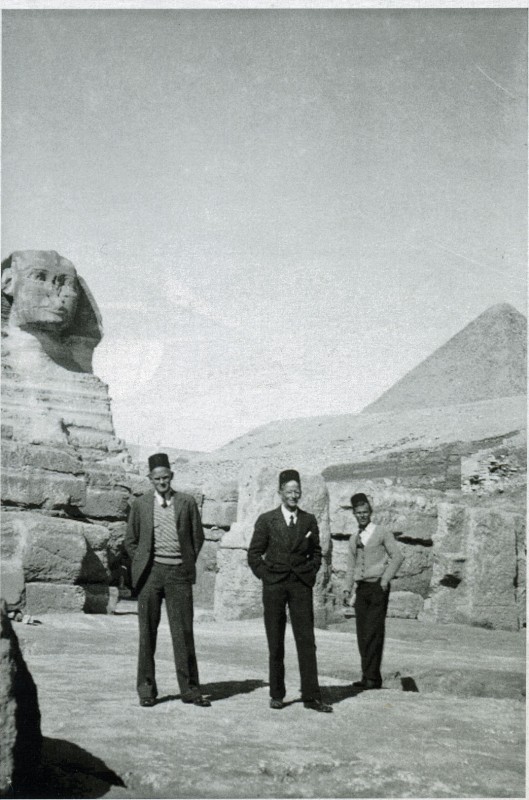
In Cairo
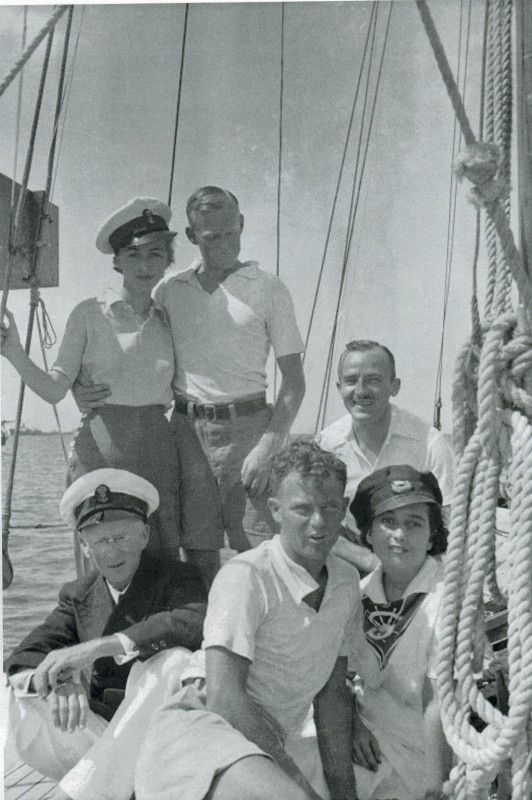
In Trinidad
In 1989 Mr and Mrs Harold Nossiter Jnr. donated approximately 700 nitrate negatives of sailing trips undertaken by Harold Nossiter Snr and his two sons between the years 1922 and 1941 to the Australian National Maritime Museum. This collection includes images of cruises along the New South Wales coast as well as the 1935-37 voyage around the world on Sirius.
Harold Nossiter and his sons Dick and Harold became the first Australians to circumnavigate the world in an Australian built yacht under an Australian flag. They had sailed Sirius 28,145 nautical miles, an epic journey and experience, this remarkable feat and the story above is taken from the ship's log and the books subsequently published.
Like many a sailor prior to him, including the first Commodore of the RAPYC when it was still just PAYC, Richard Hayes Harnett who built the advanced for her time too yacht 'Australian', it was Harold Snr.'s determination to know how to sail unknown waters and to advance yacht design itself that remains one of those hidden elements that contributed to the success of the Sirius circumnavigation.
From a review of his book 'Northward Ho!; -
For many years before the idea was consummated, Mr. Nossiter had been devising ways and means of making this remarkable trip. He had carefully studied different rigs, planned suitable routes, and discussed the prospects of the voyage with nautical friends long before the keel of the Sirius was laid in 1934. And these studies and conversations had convinced him first and foremost that for such a journey a modern-rigged vessel with a canoe stern was the ideal type. The rig for ocean-cruising was, he felt, a staysail schooner, as under this rig the sail area would be equally distributed over the vessel and could be reduced by stages. The staying of the mast, too, was simpler than for any other. A schooner also, he recognised, was fair to windward and good with the wind on beam or quarter. It will interest not only the seafaring man, but the layman as well to give a brief description of the Sirius. Her length is 53ft' 6in overall and 44ft 7in on low-water level, with a breadth of 13ft 6in. Her hull is particularly strong, for the scantlings are in excess of Lloyds' requirements. Below the water-line the planking is of Western Australian jarrah, this timber being used owing to its teredo-resisting qualities, whilst above the water-line the planking is of New Zealand kauri. The masts and spars are all of solid Norwegian spruce.
As she had encountered all types of weather and every varying climate, an idea can be gained of what a sturdy little craft she is, and a tribute can be paid to her designers and builders and to the material upon which they worked. The author says that neither he nor his sons were affected with sea-sickness throughout the entire voyage. Indeed, not a meal was missed, and they could always stay below in the worst weather without feeling any great discomfort. This was 'mainly due to the vessel's easy motion and to the roominess of the saloon, cabins, and the position of the galley. 'Northward Ho!' is a fine memento to a daring adventure and a wonderful experience, and I am sure that those who read it will look forward eagerly to its sequel, 'Southward Ho!' which is now in course of preparation. Features of the volume are its interesting photographs, instructive maps and appendices, and comprehensive index. An Australian Odyssey (1937, June 2). Sydney Mail (NSW : 1912 - 1938), p. 17. Retrieved from http://nla.gov.au/nla.news-article160502496
Harold and his wife lived on the Sirius and rented out their home on his return, only leaving her when the yacht was commandeered for war service during WWII.
Sirius, like previous Nossiter yachts and the Nossiters themselves, visited Pittwater during the Season that was Summer then, and even the off-season - because they loved to sail and loved this place especially. Succeeding generations of Nossiters are still part of the local sailing and those that don't live here still visit annually.
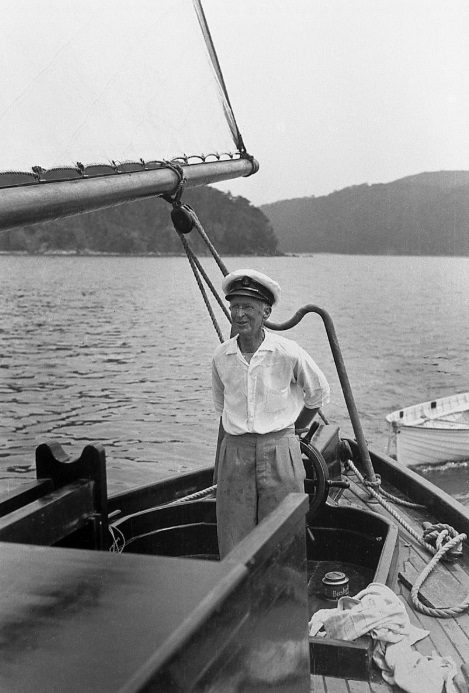
MISS PEGGY COLBERT, daughter of Mr. and Mrs. P. E. Colbert, of Strathfield, will be the guest of Mr. and Mrs. Harold Nossiter on their yacht Sirius, which is at Pittwater until after the New Year. Spotlight on Society (1938, December 28). The Sun (Sydney, NSW : 1910 - 1954), p. 9 (LATE FINAL EXTRA). Retrieved from http://nla.gov.au/nla.news-article231131578
The yacht itself is still going too, thanks to another Australian. Find out more at: https://sirius1935.com/
Mr. Nossiter was 72 when he came home having achieved his promise of a world sailing adventure to the two sons who had been part of his sailing cruises and races for so long. He also met his promise to his fellow Australians - to show the rest of the world how great the yachts and sailors are that are dreamt up and realised here.
Harold Nossiter Snr aboard Utiekah II c1934 - Nossite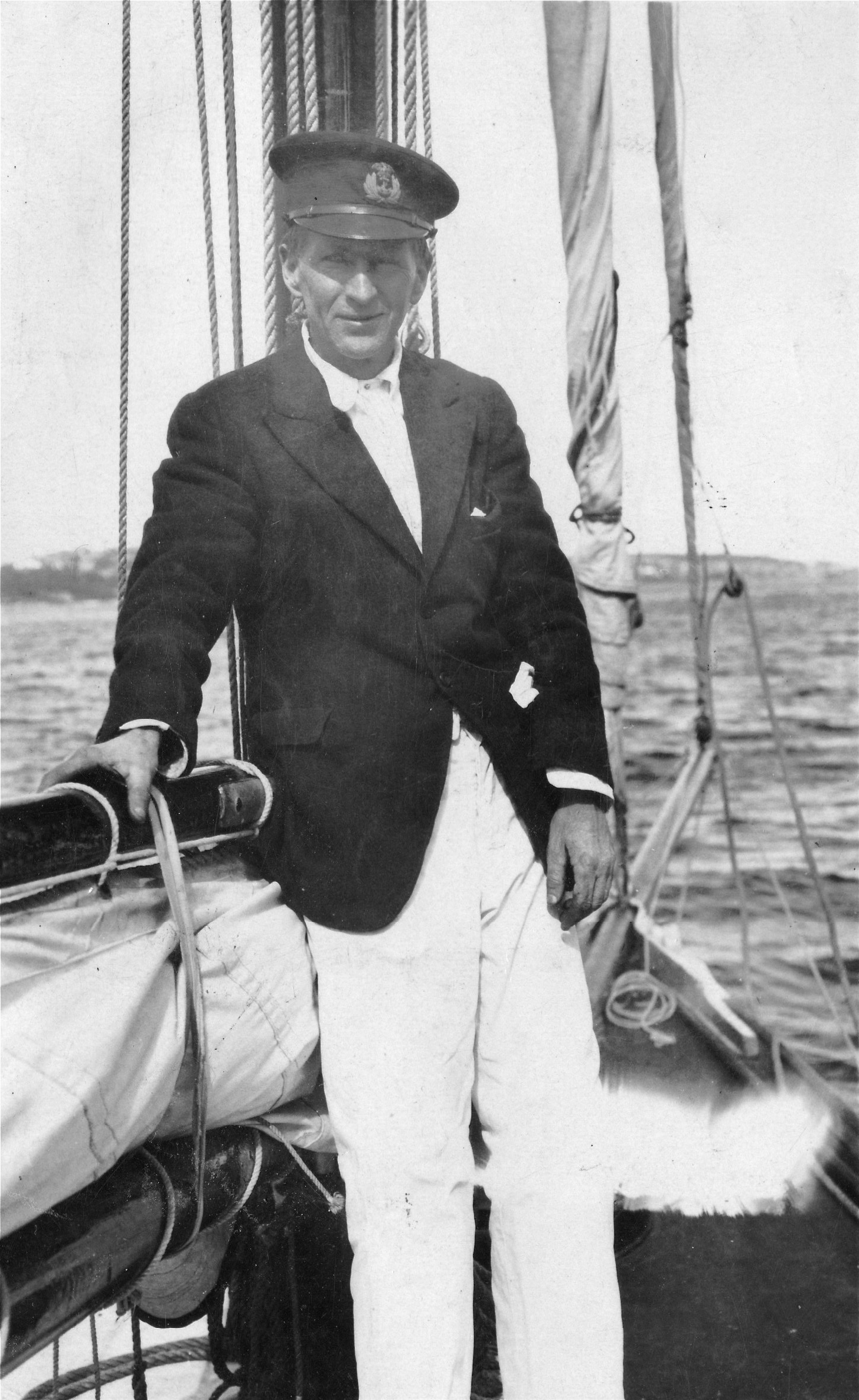 r family photo
r family photo
The Sirius - Back Home - flying her club burgees.